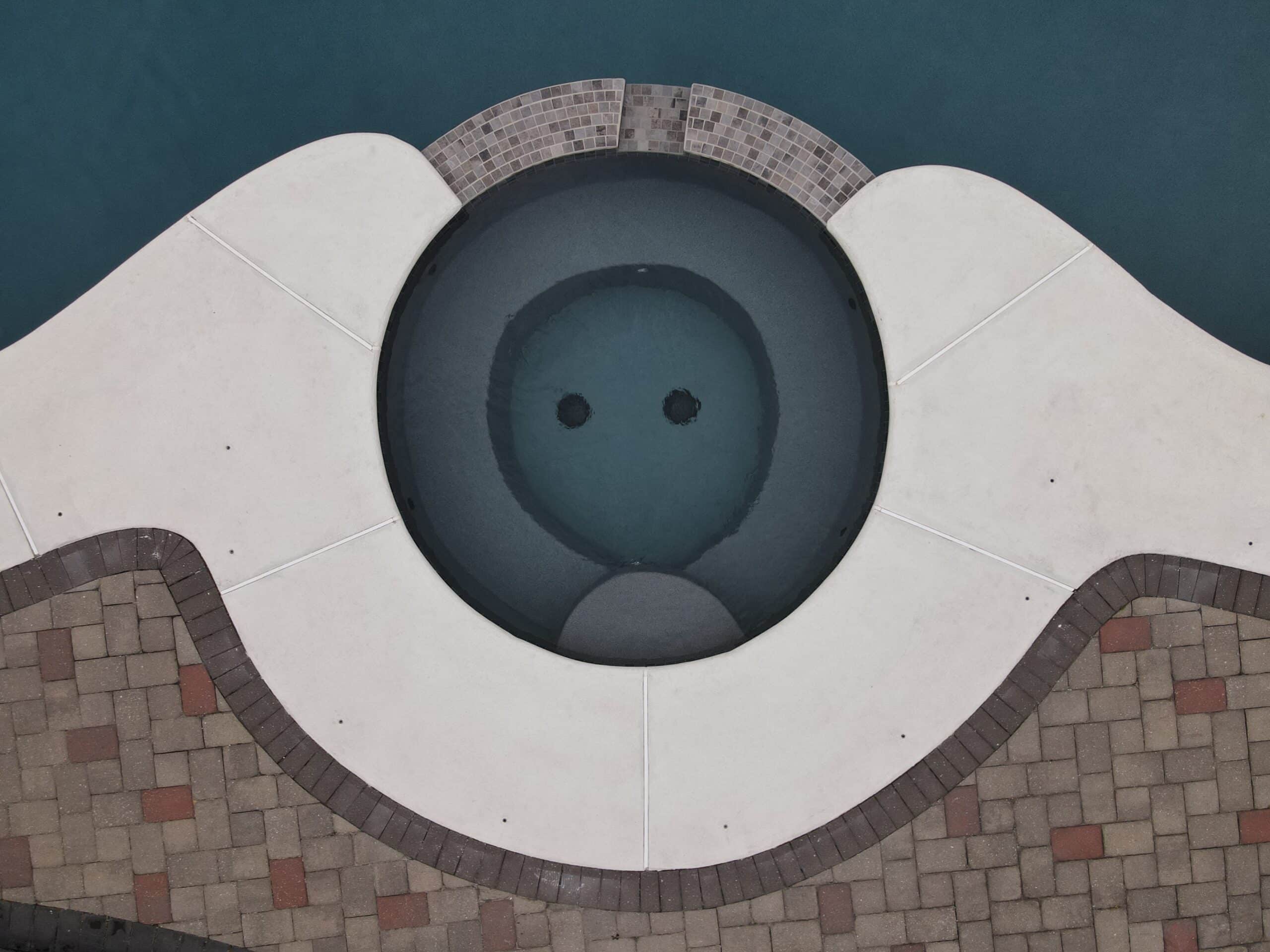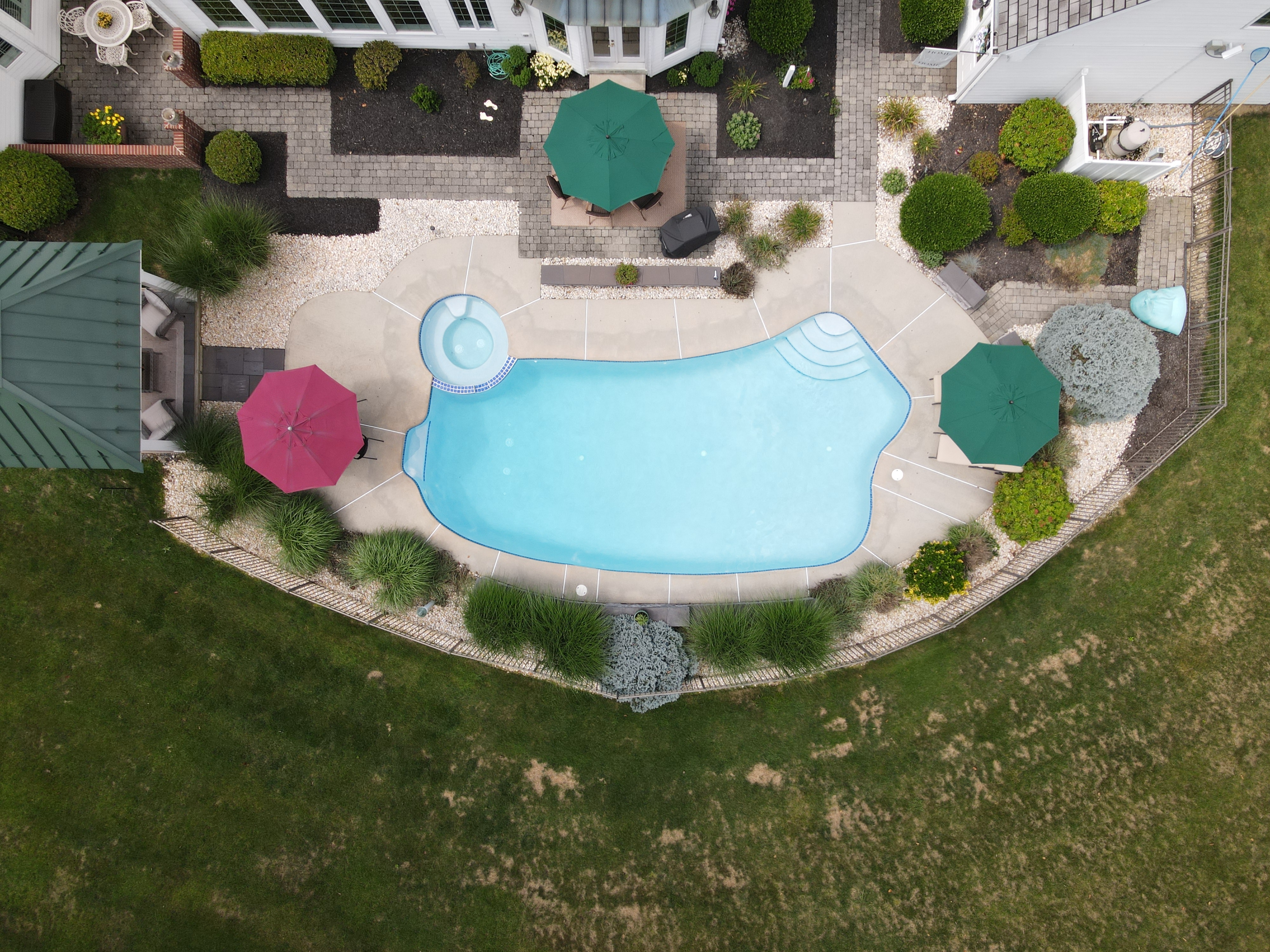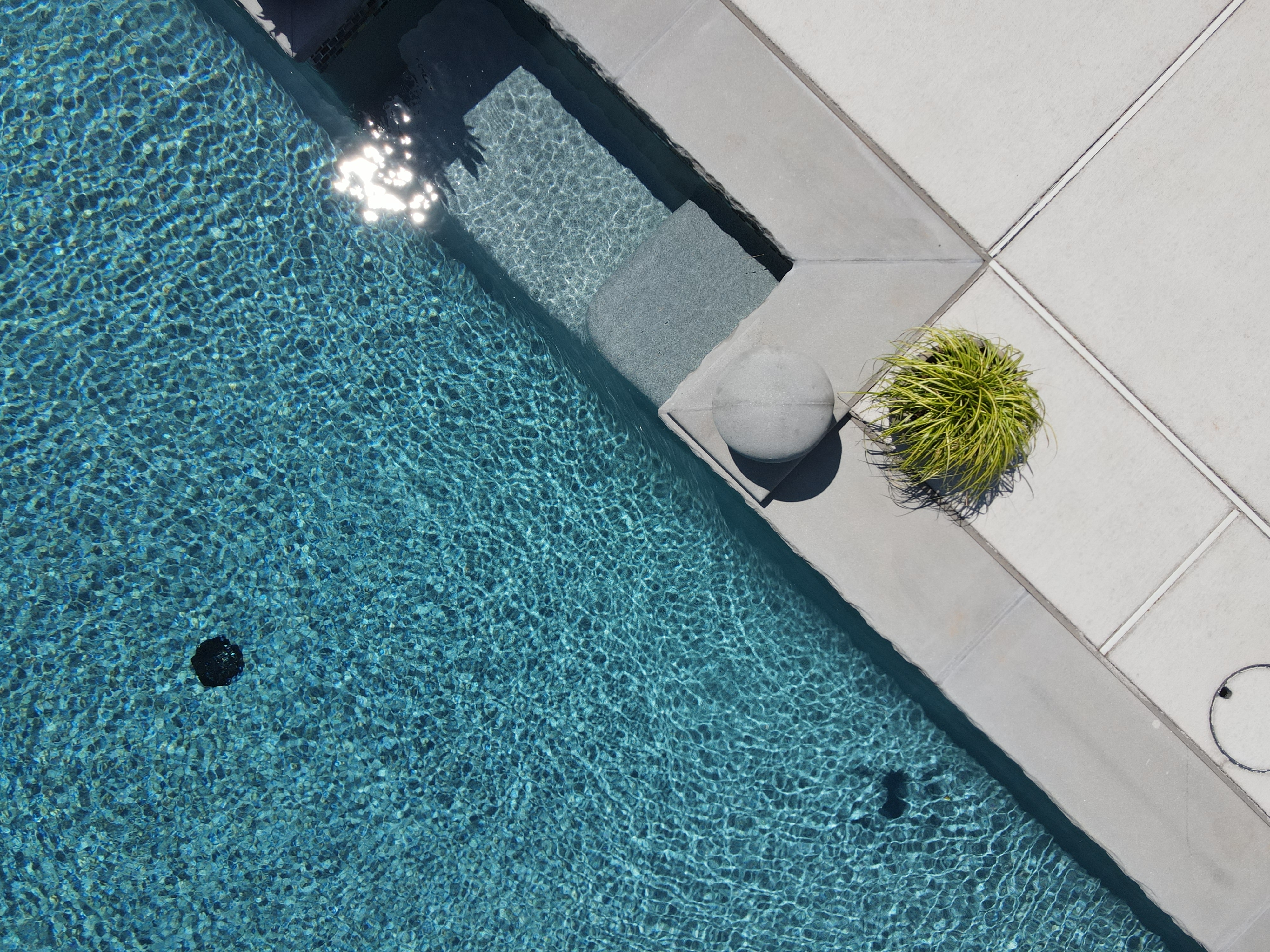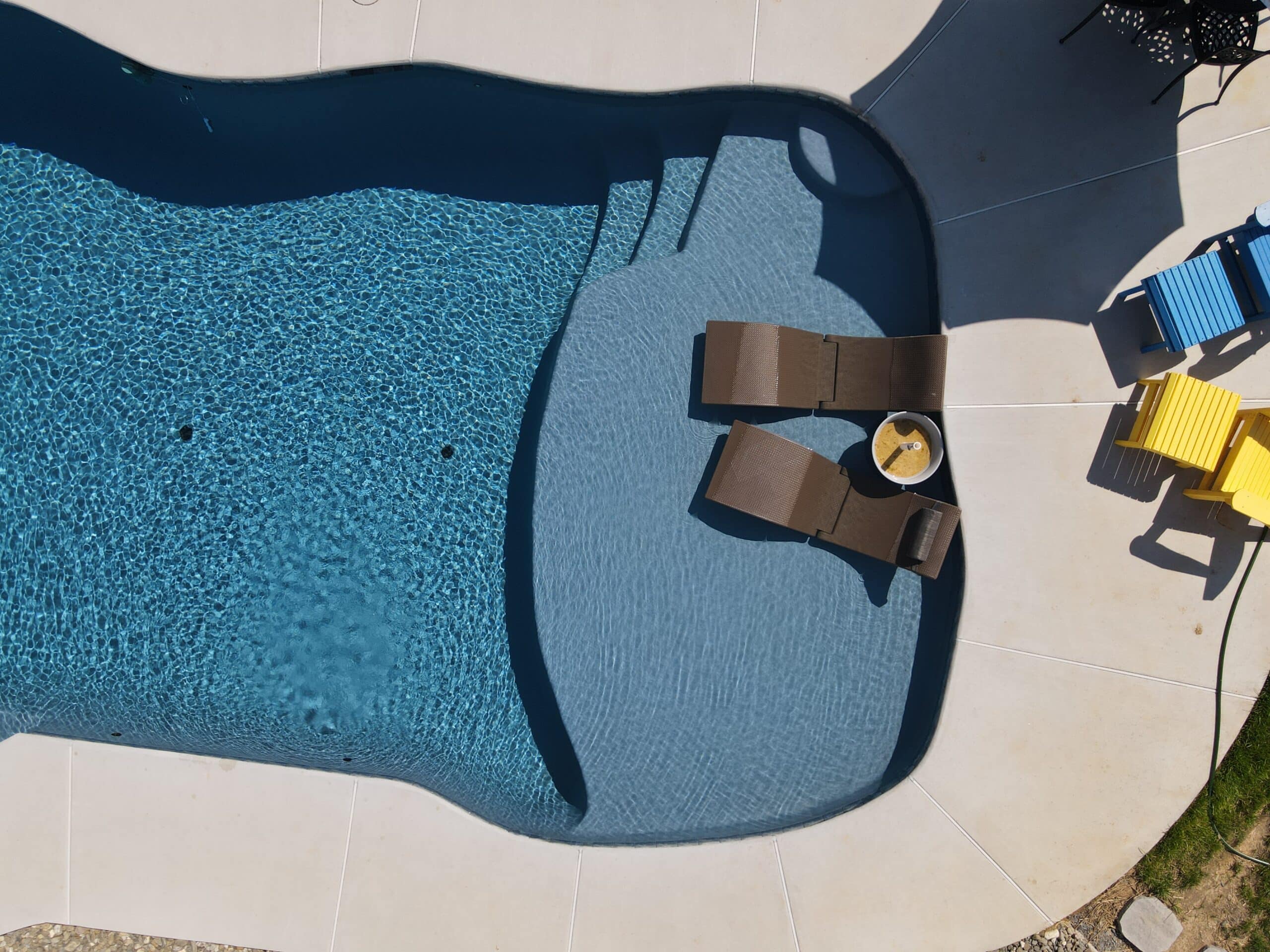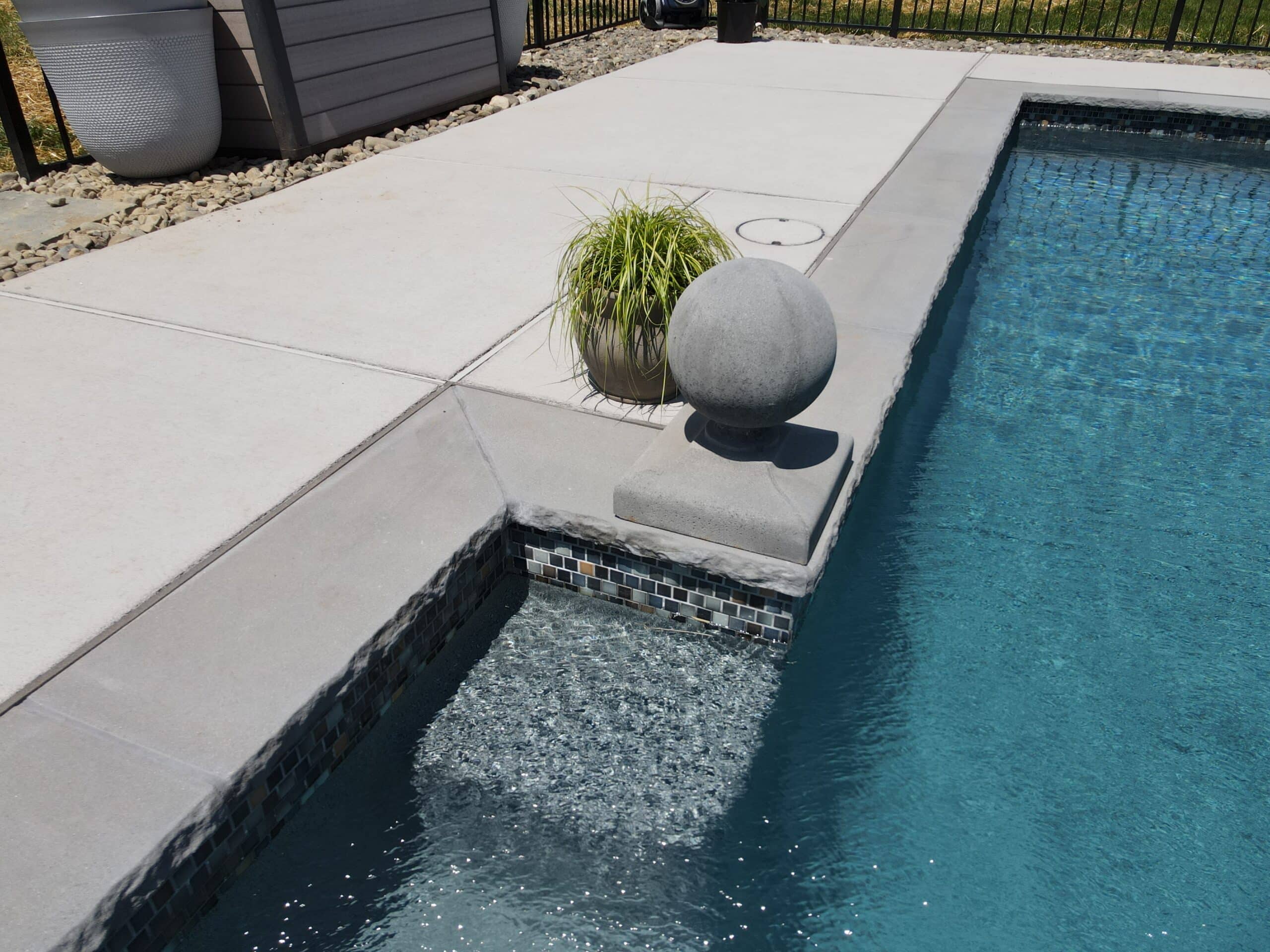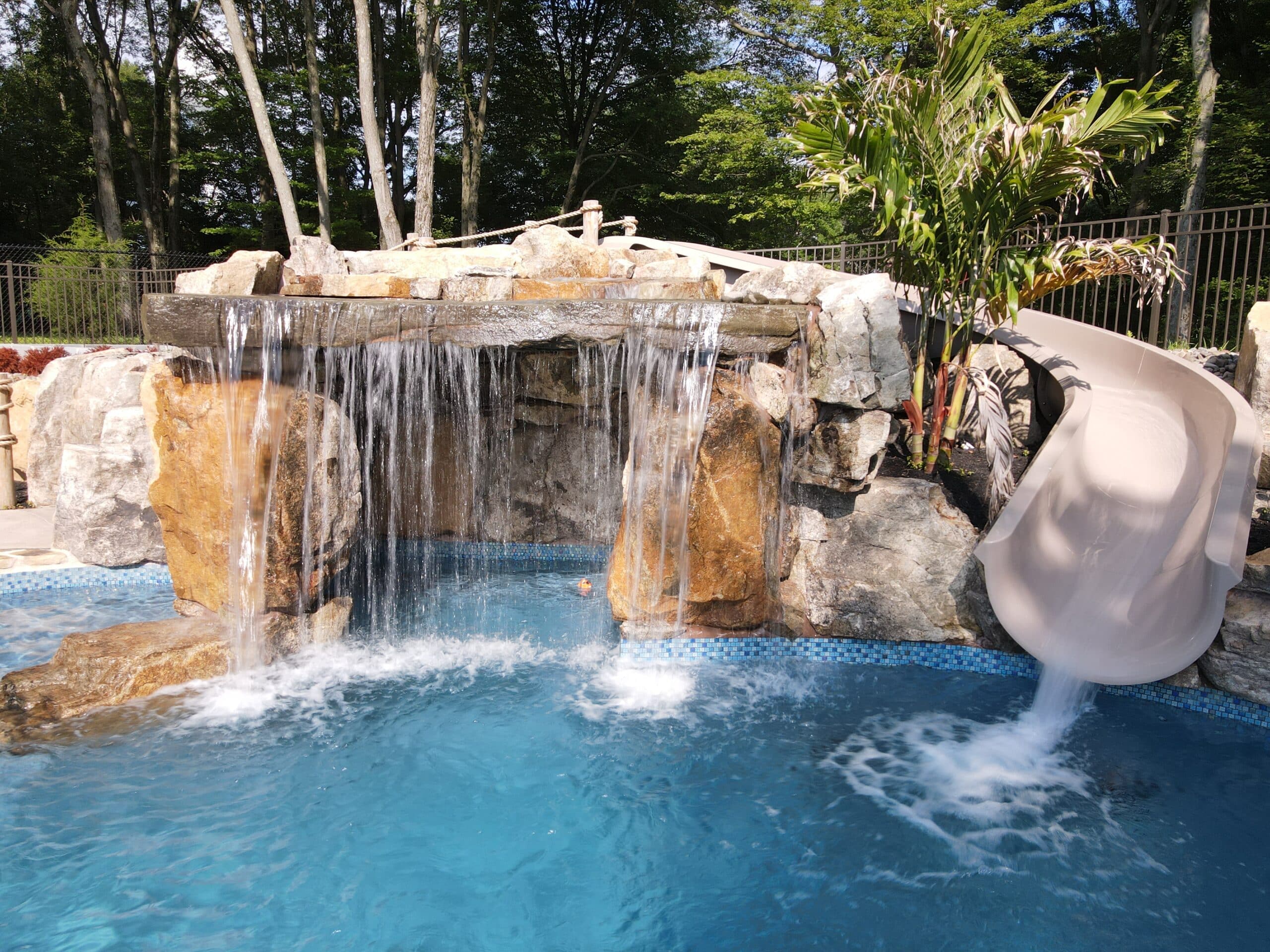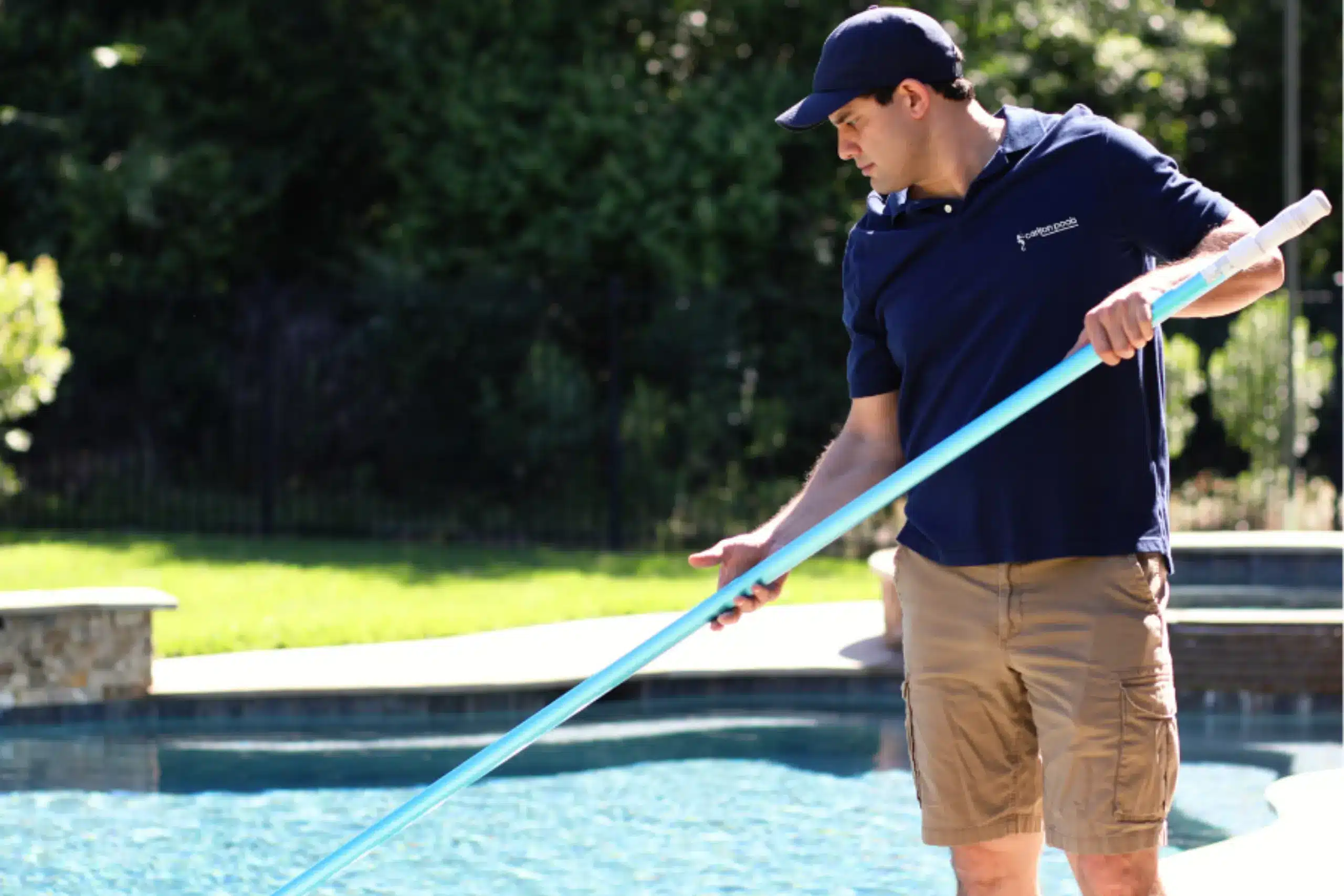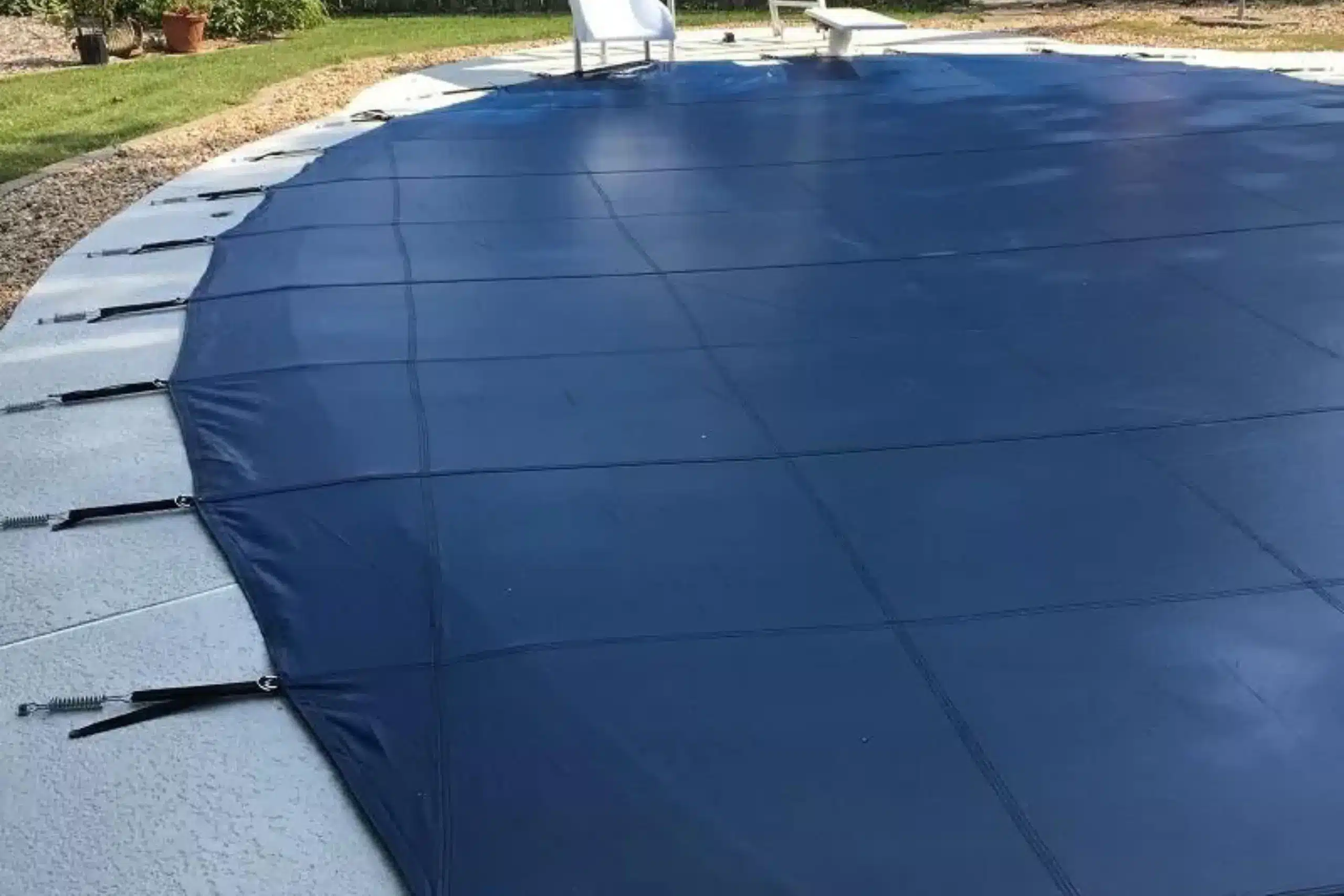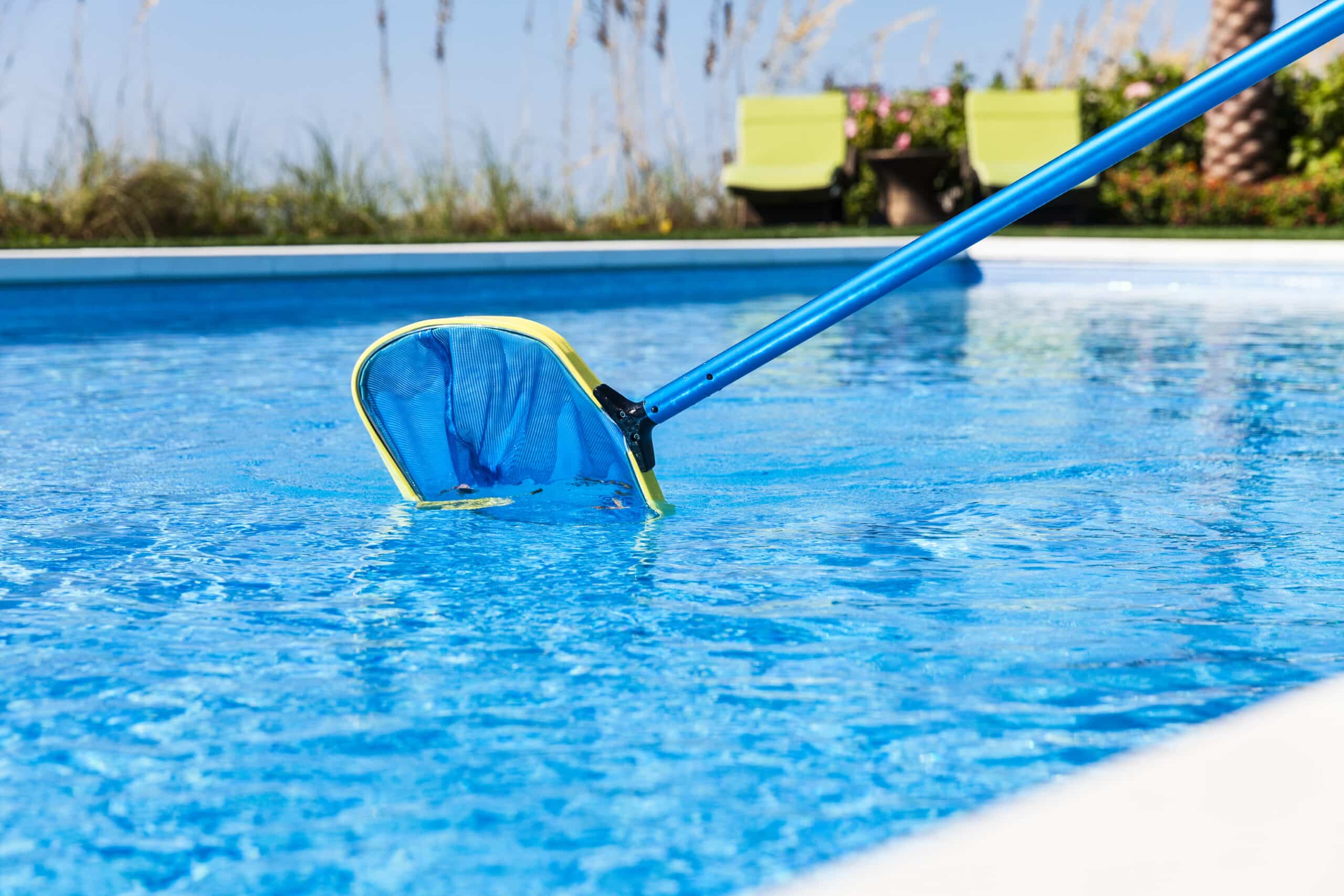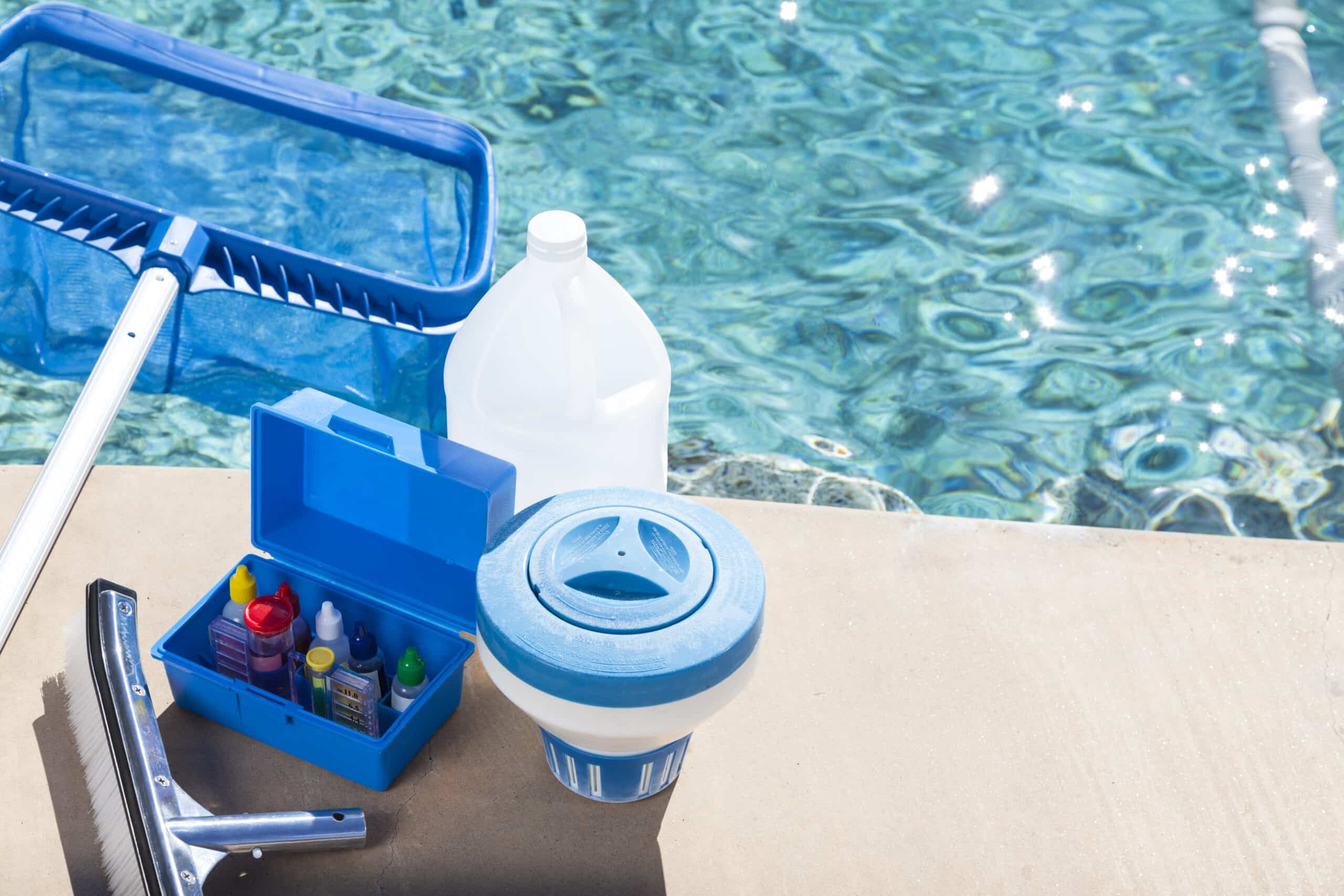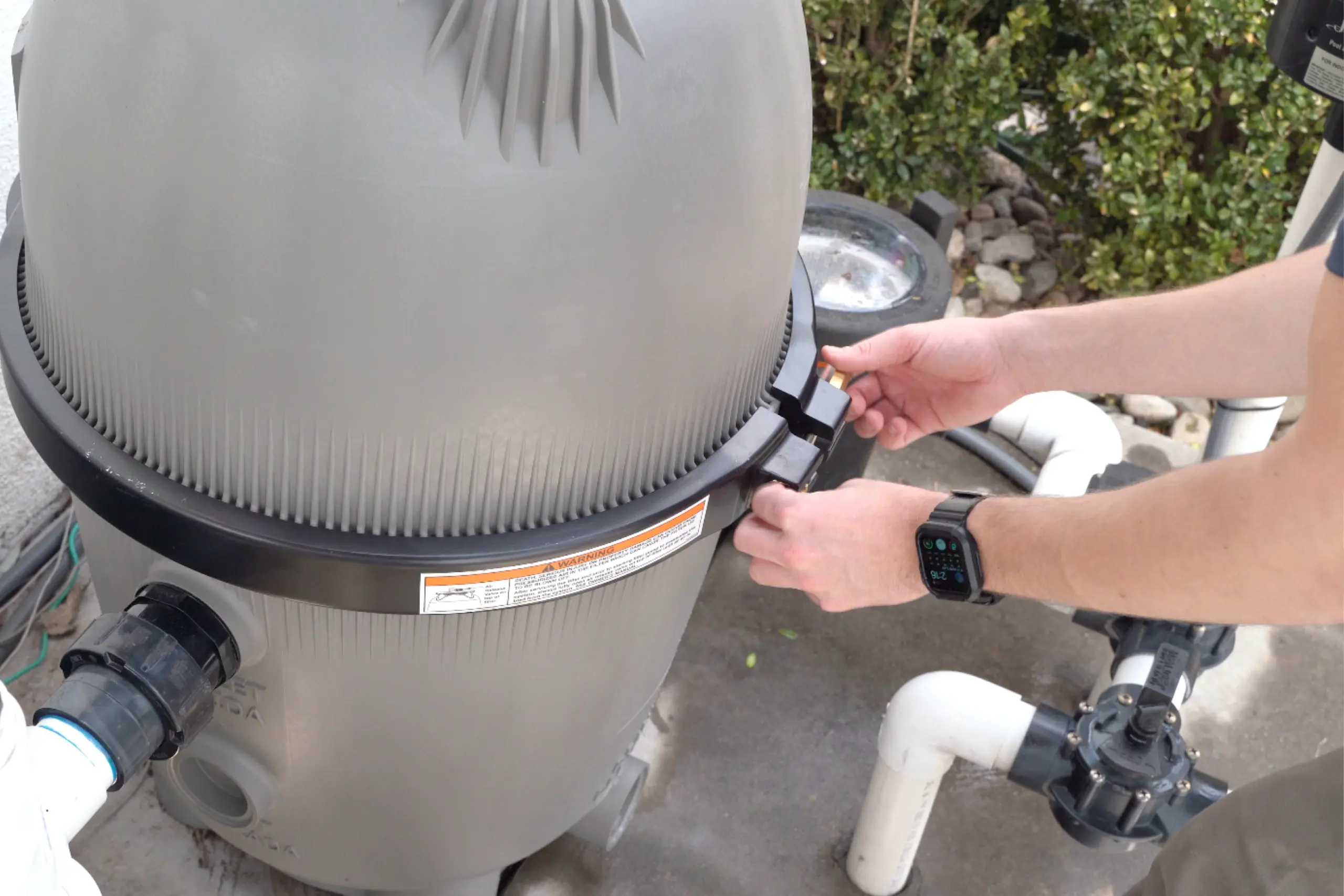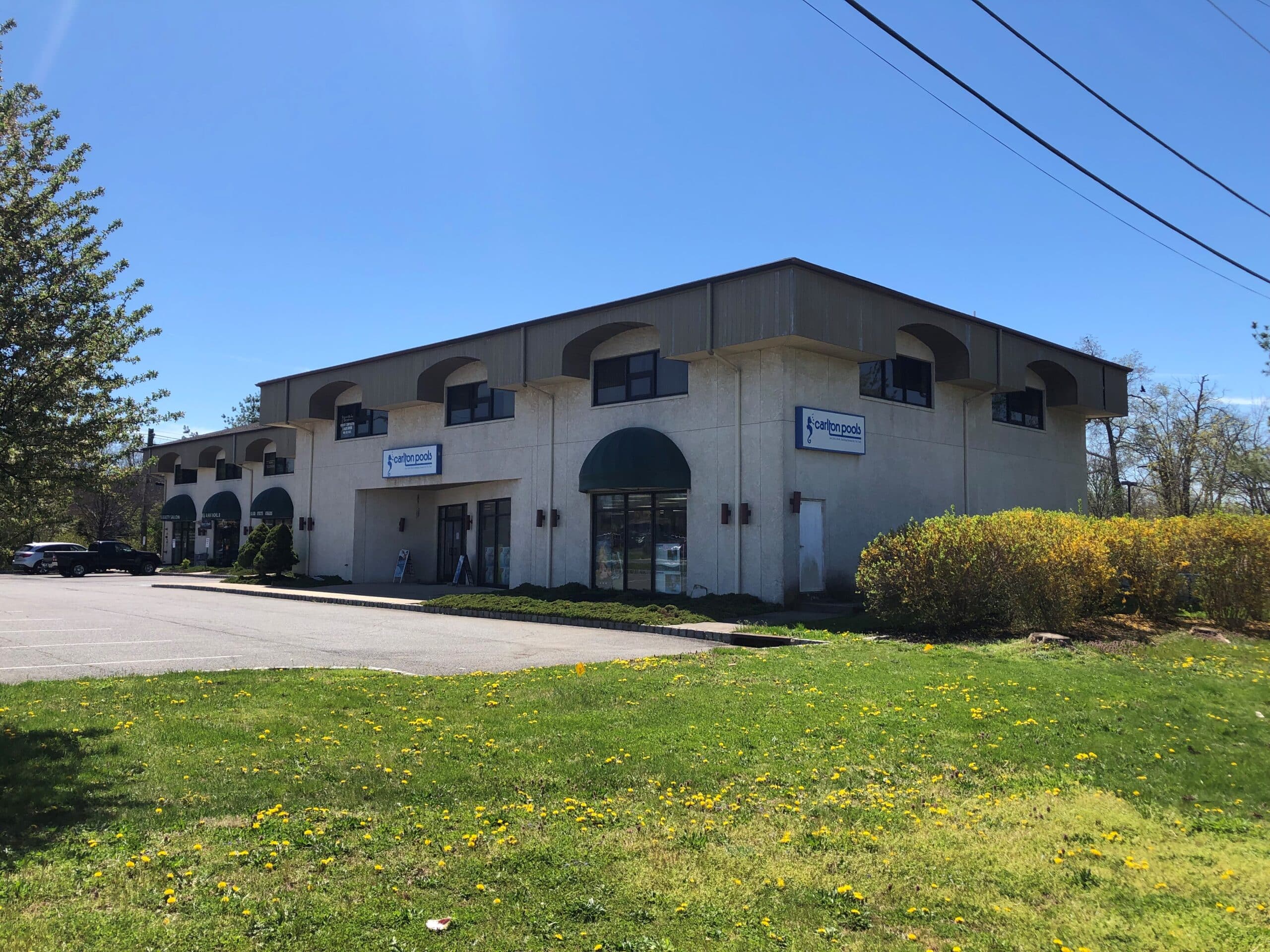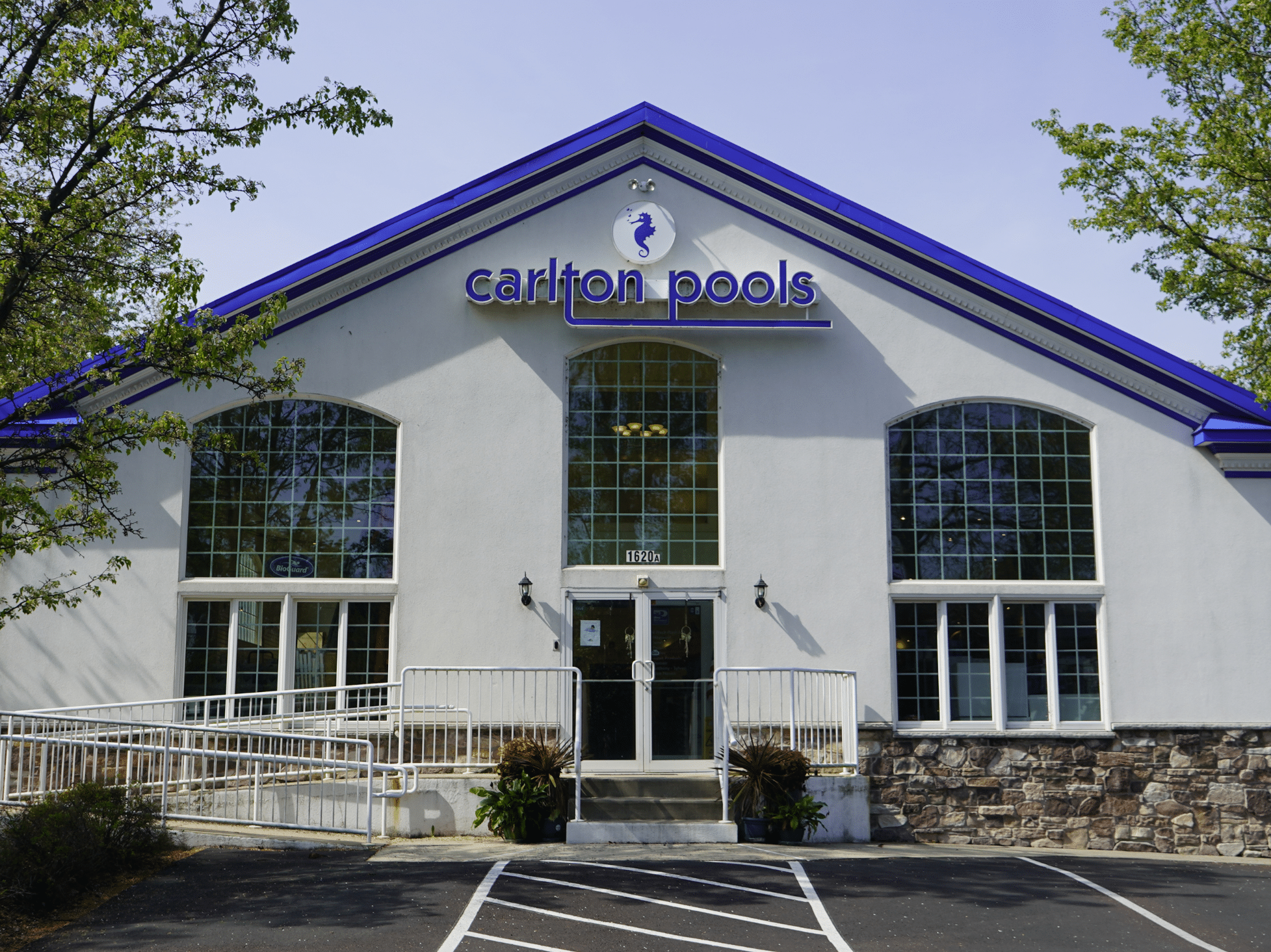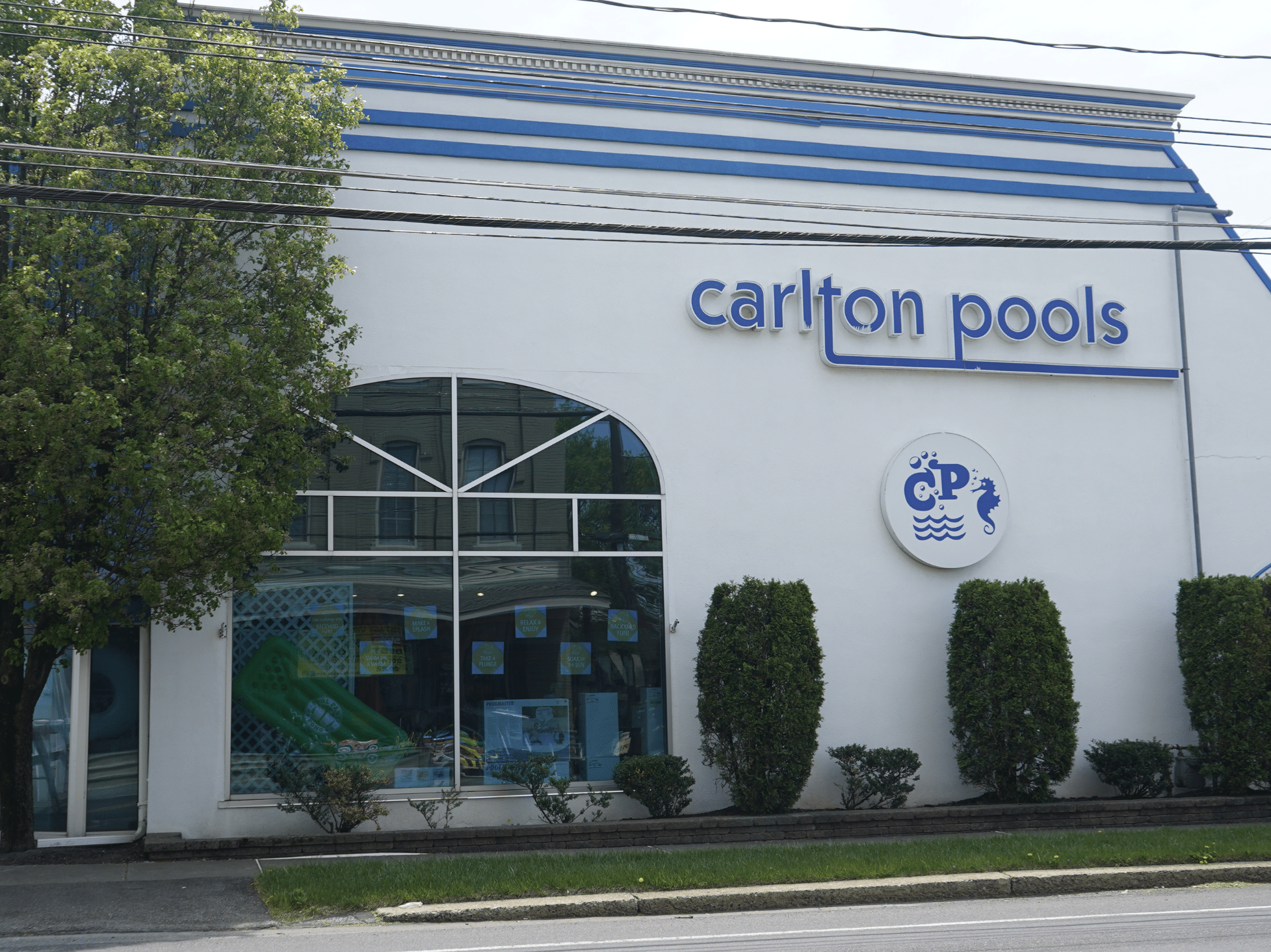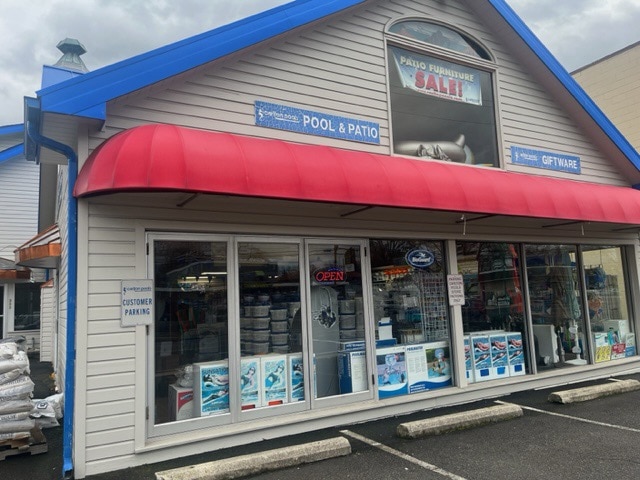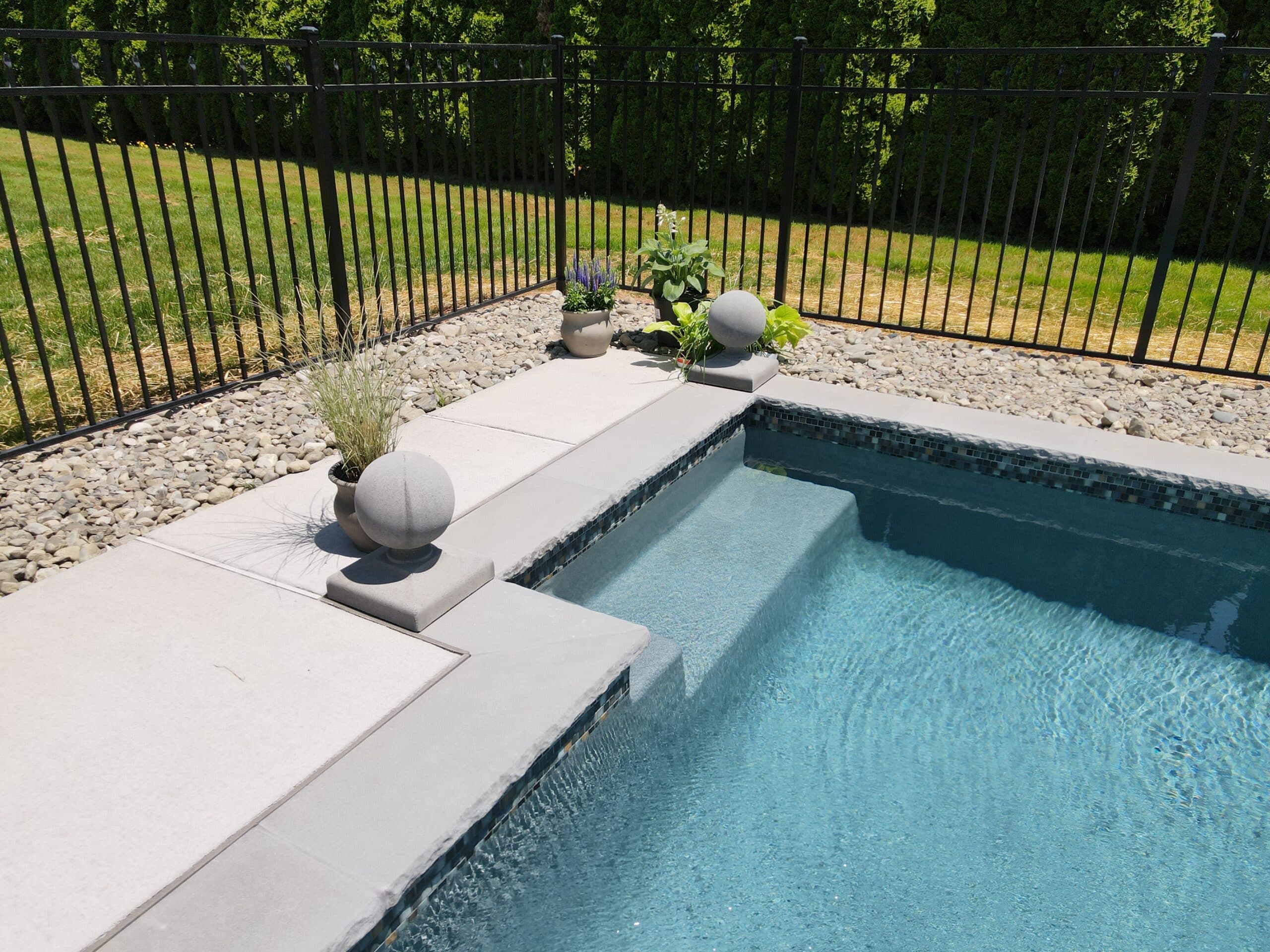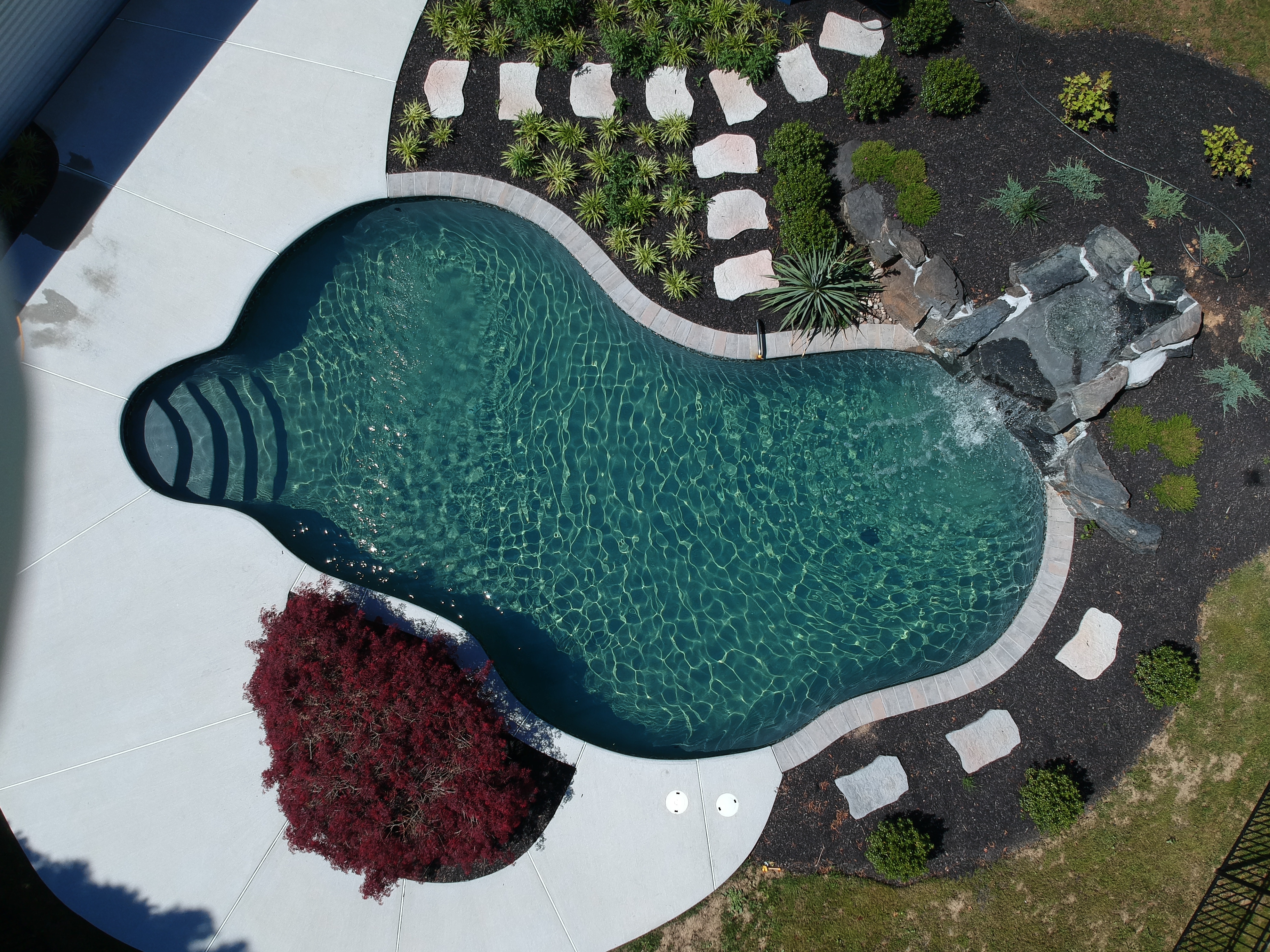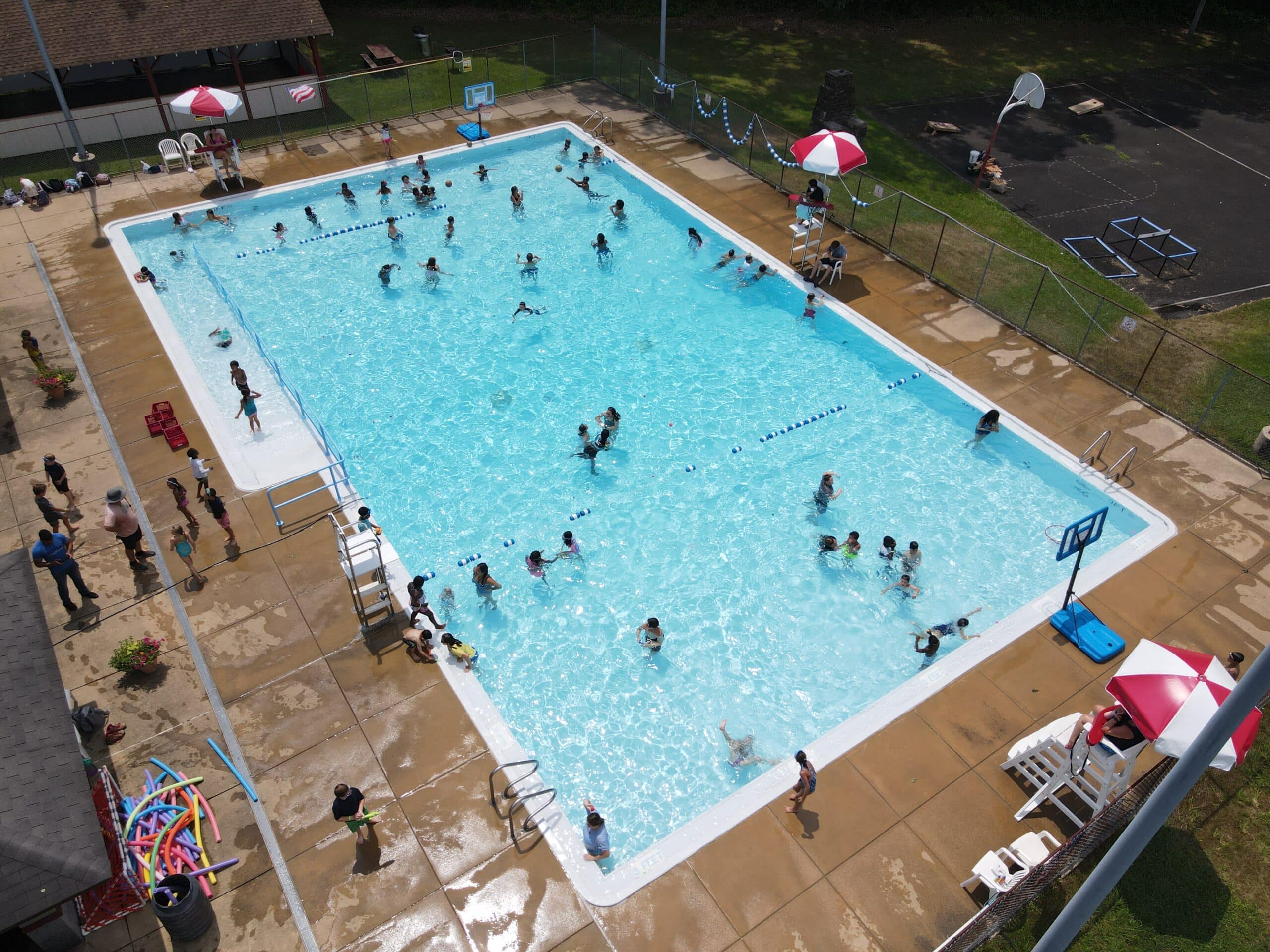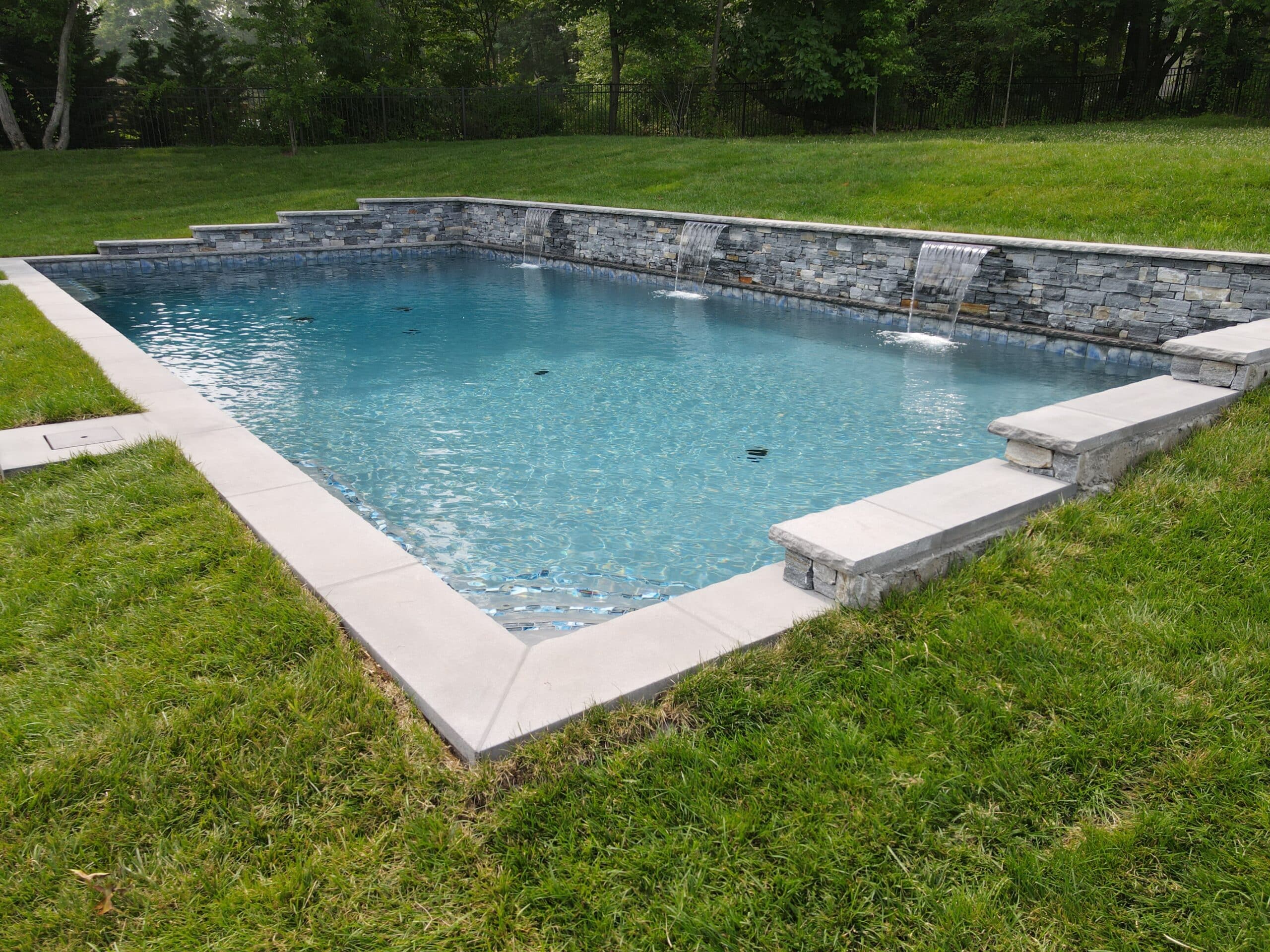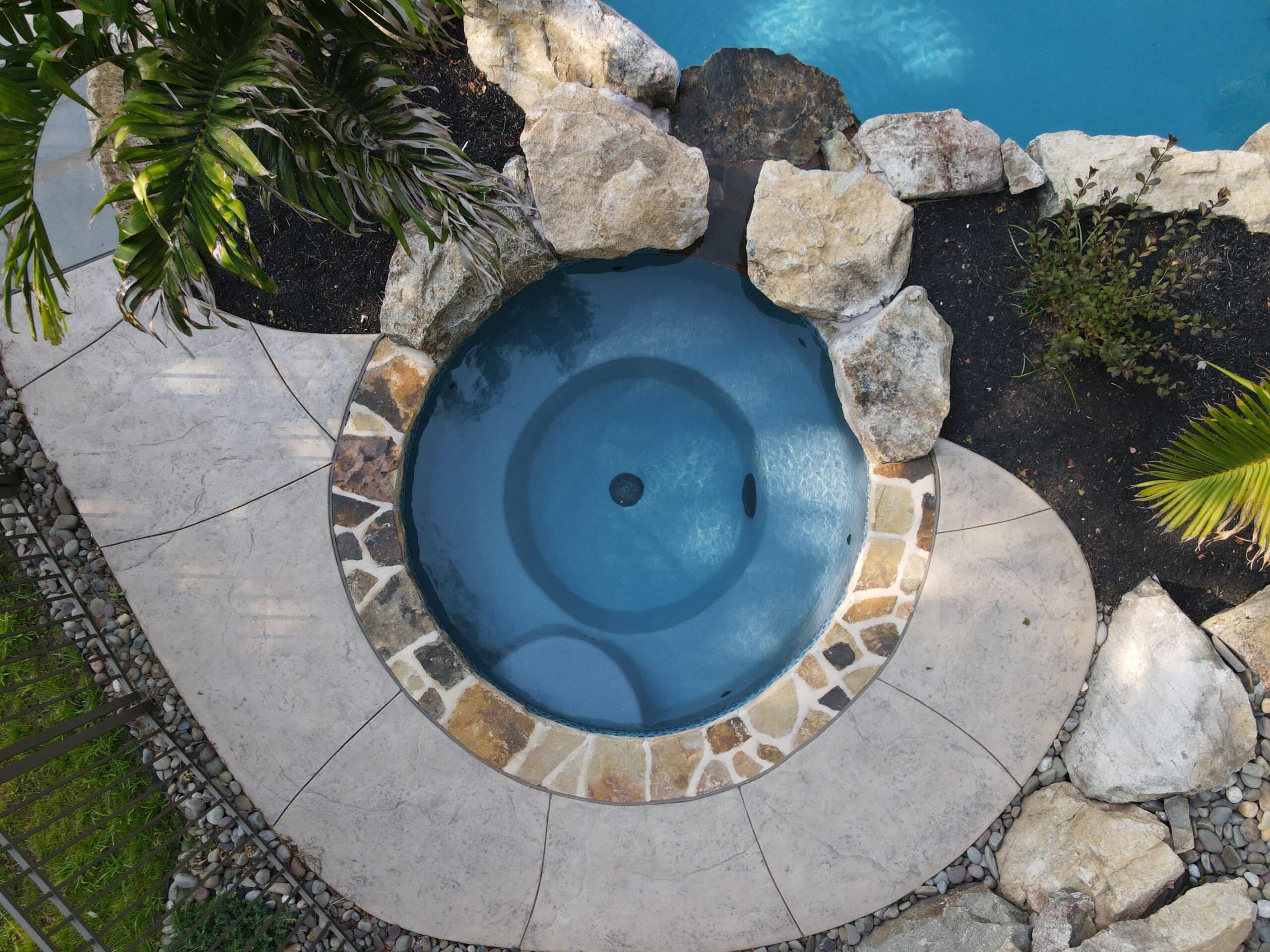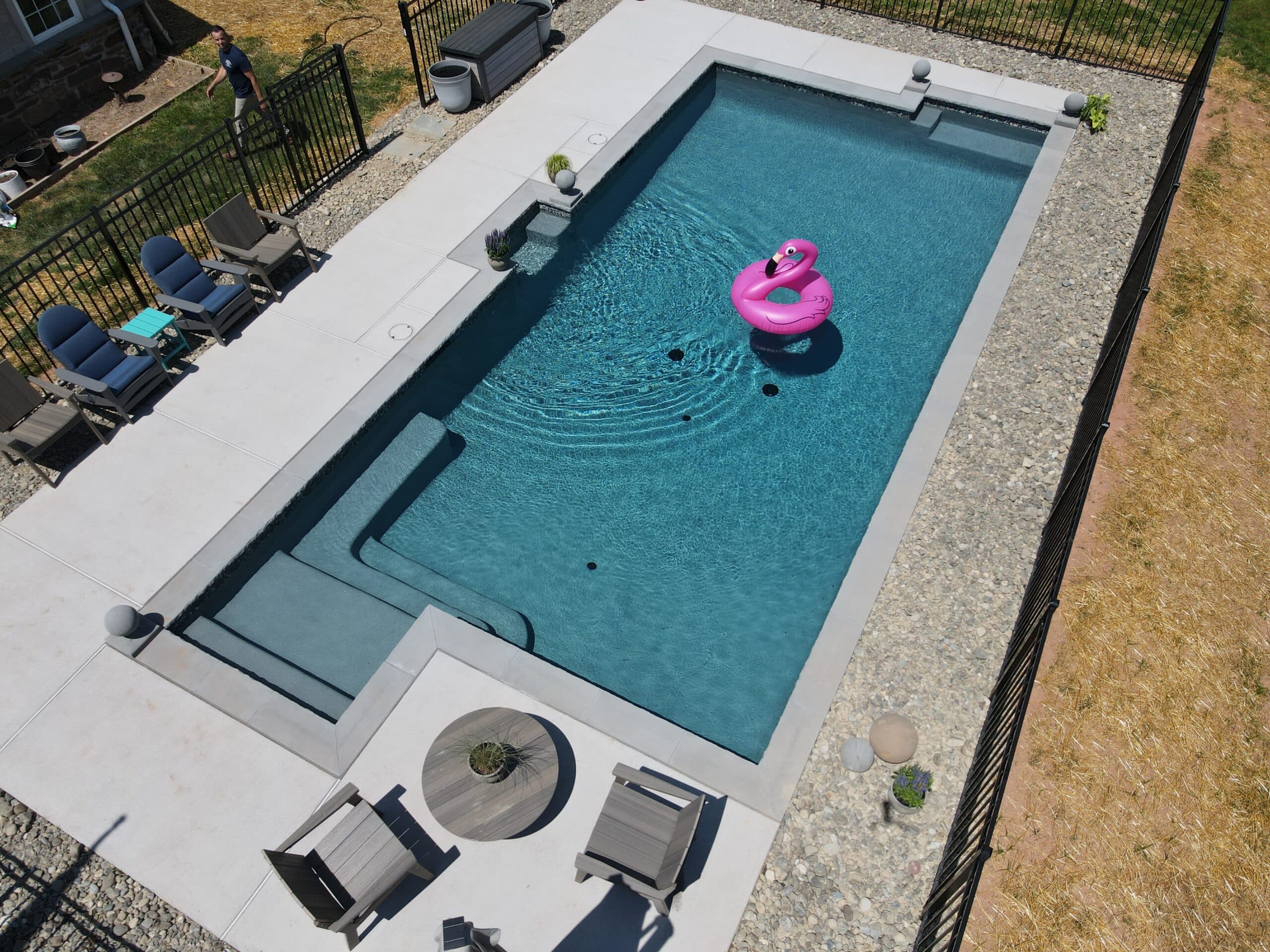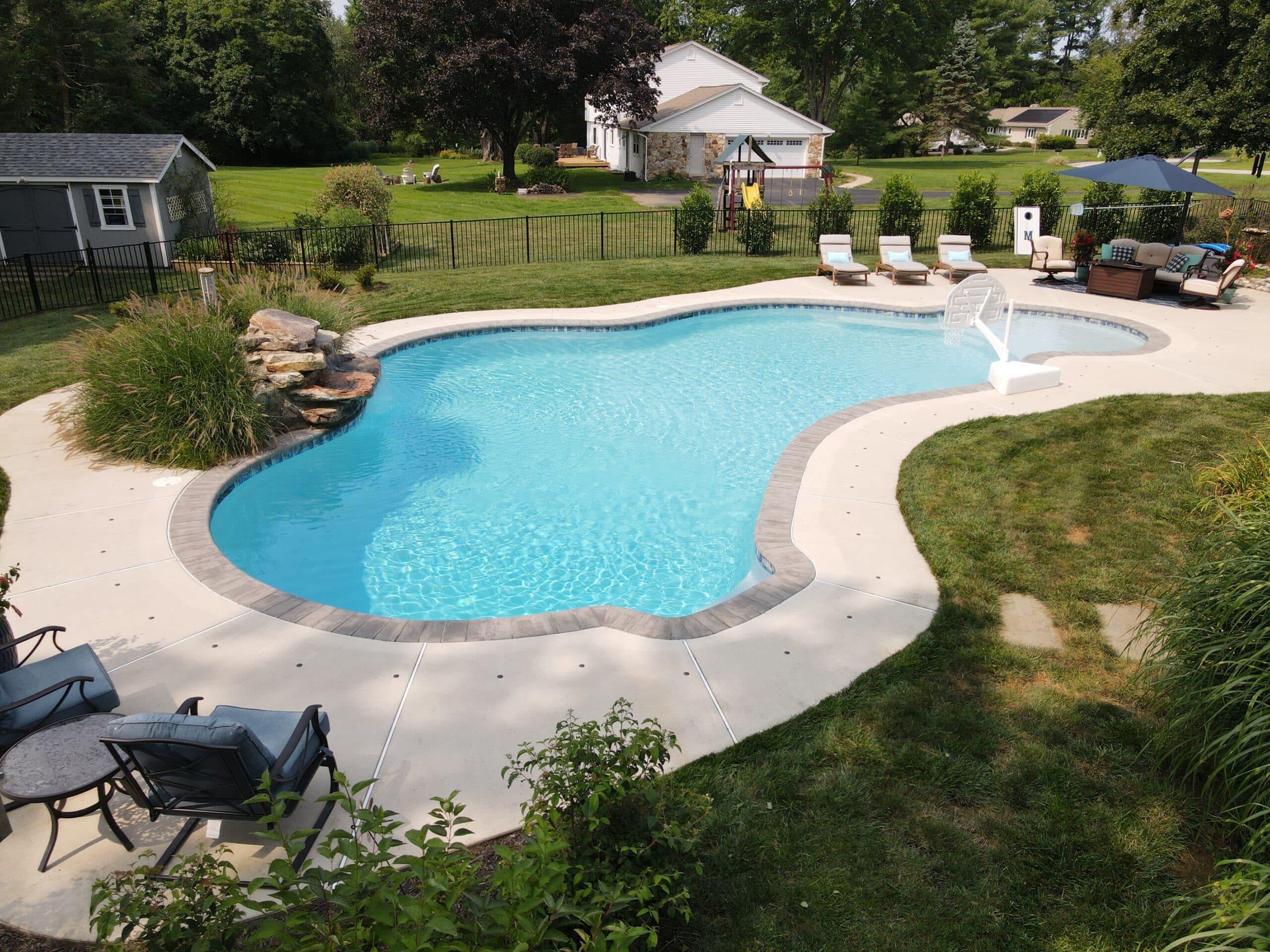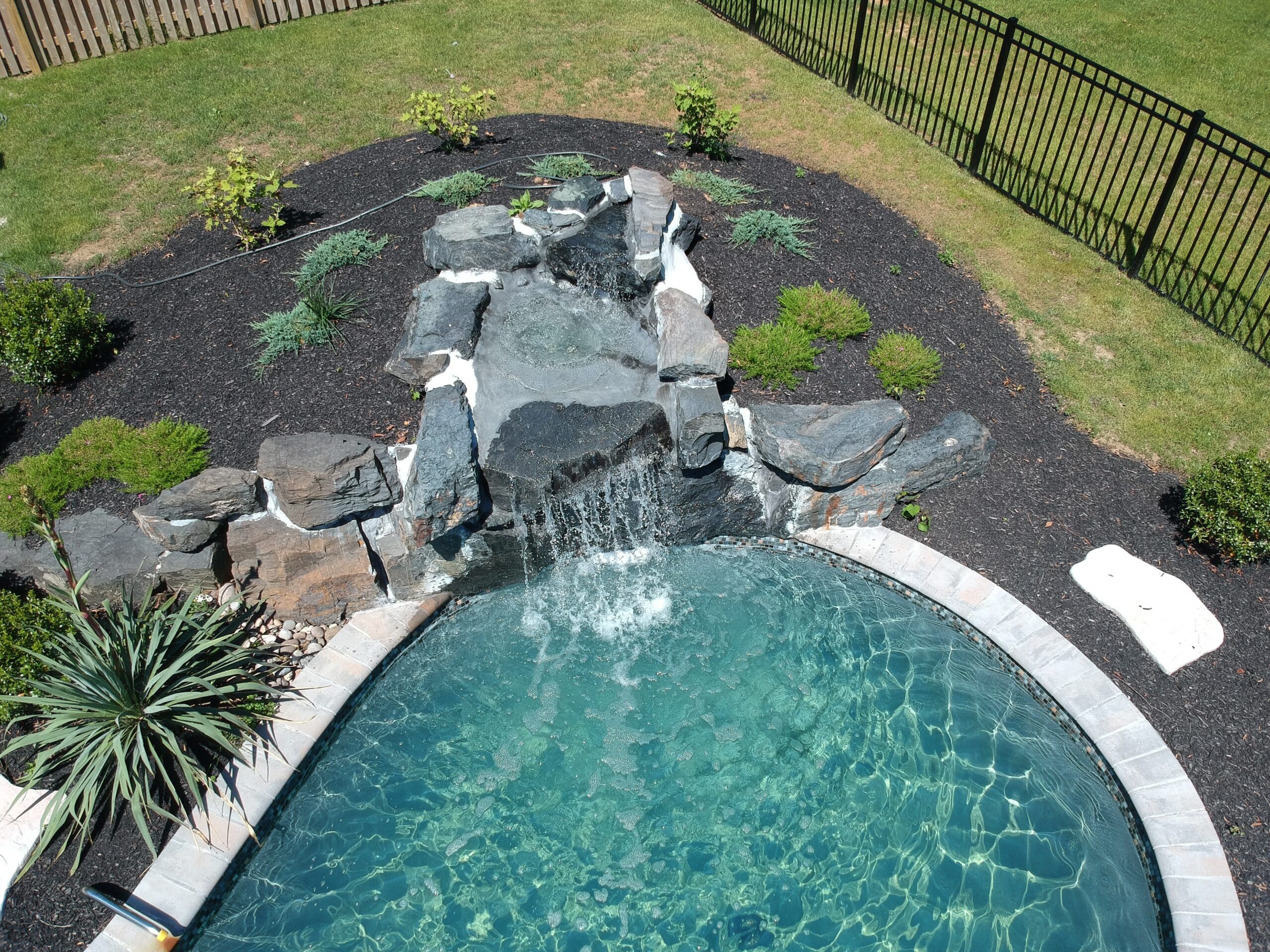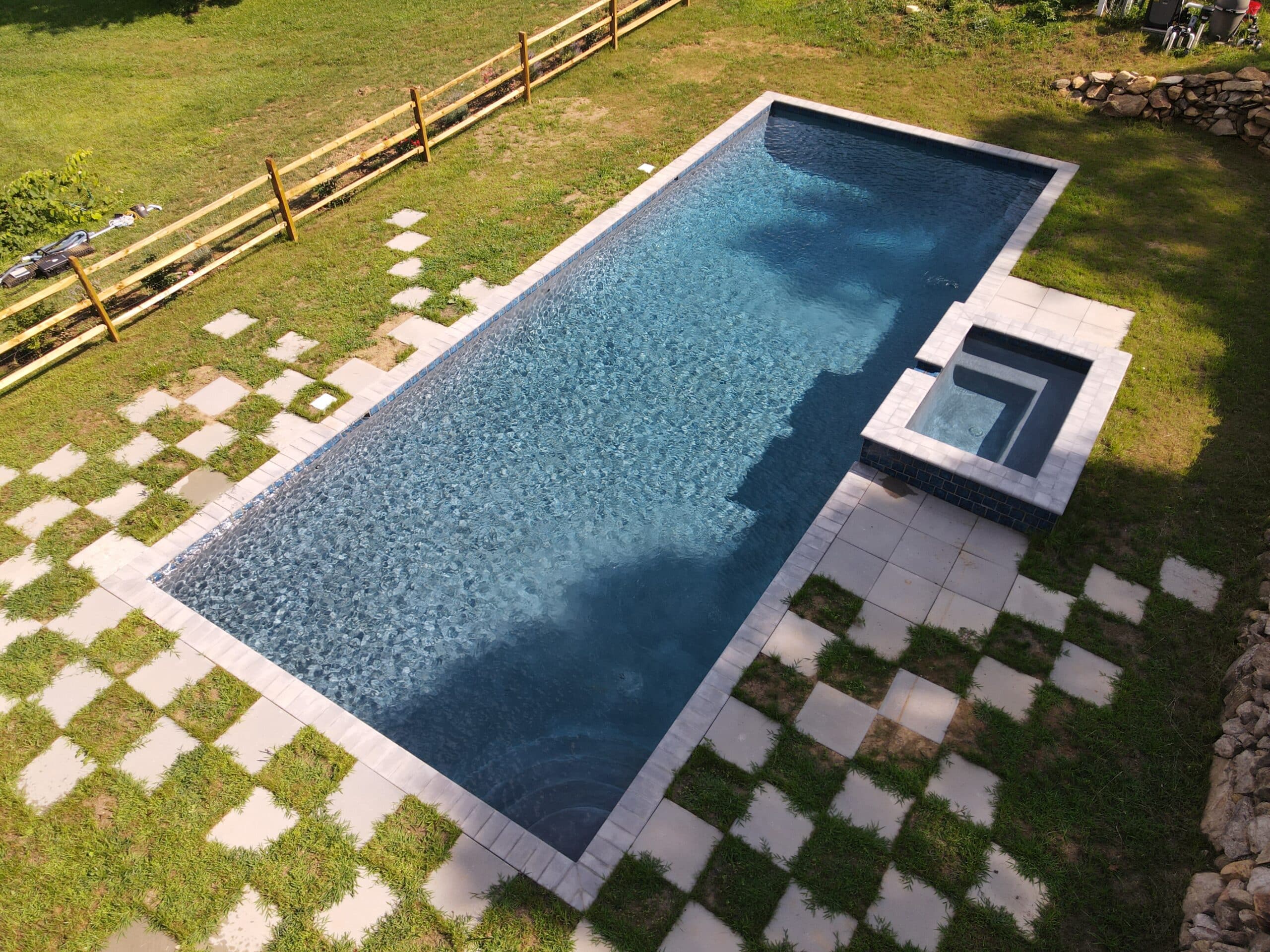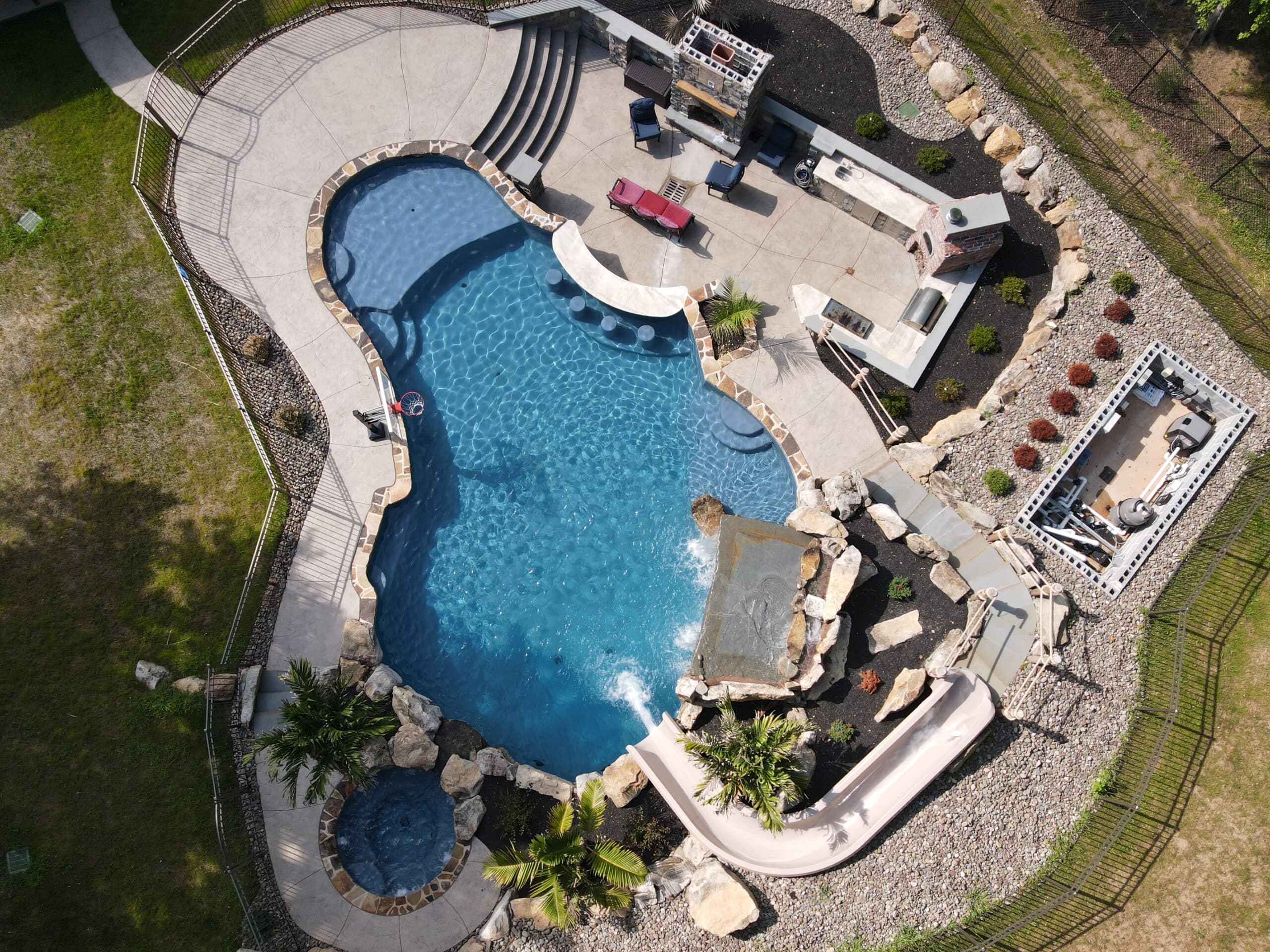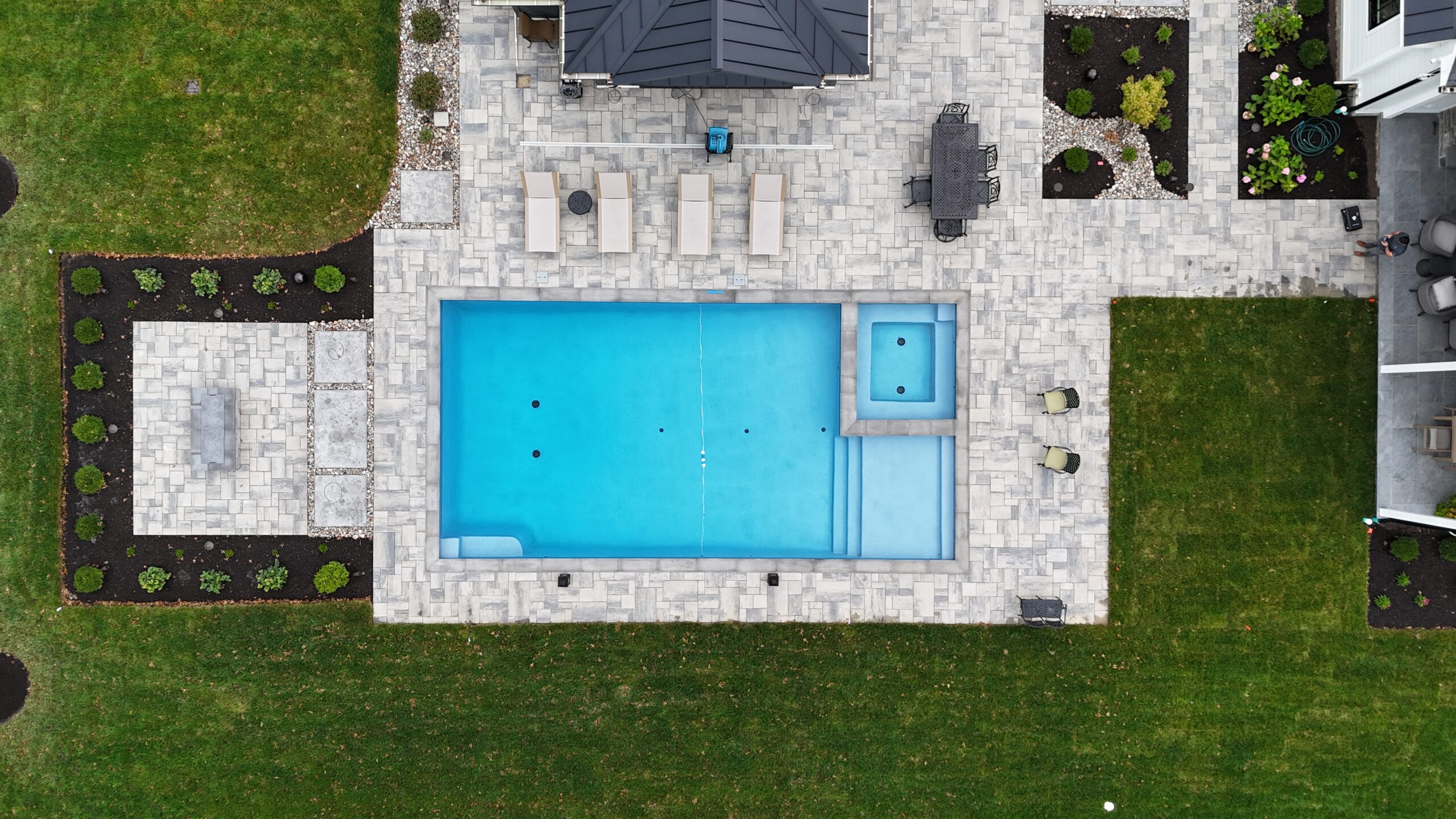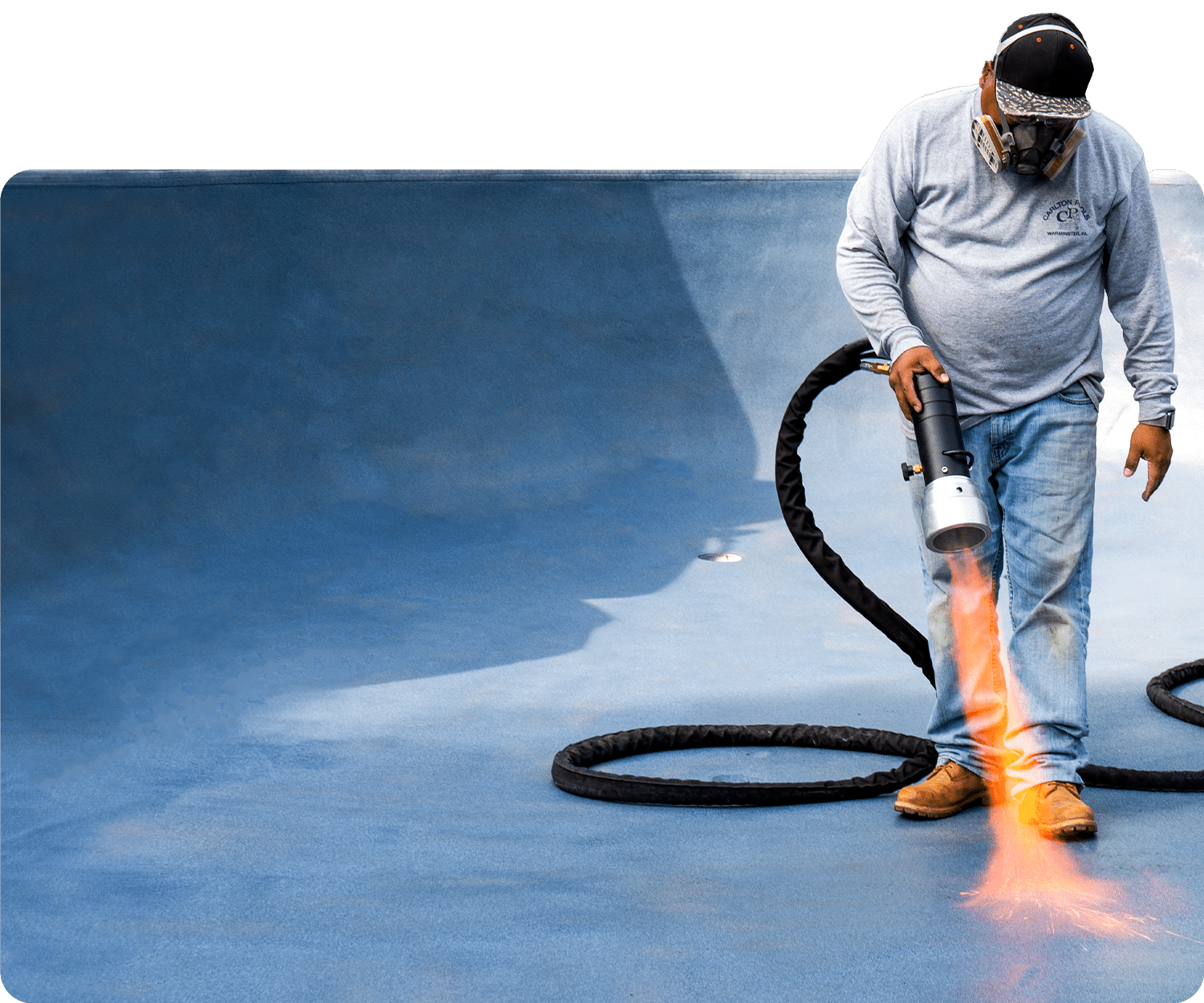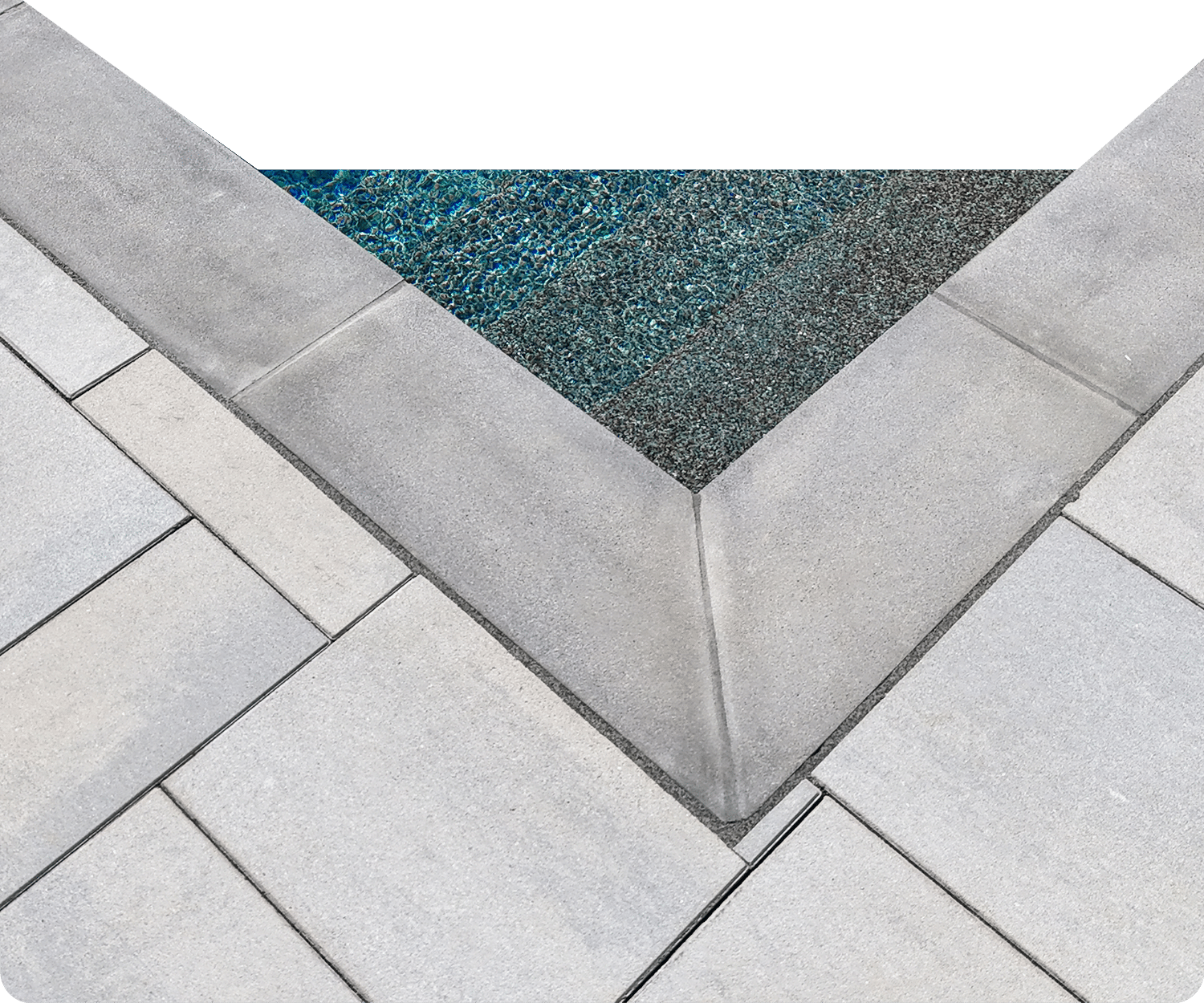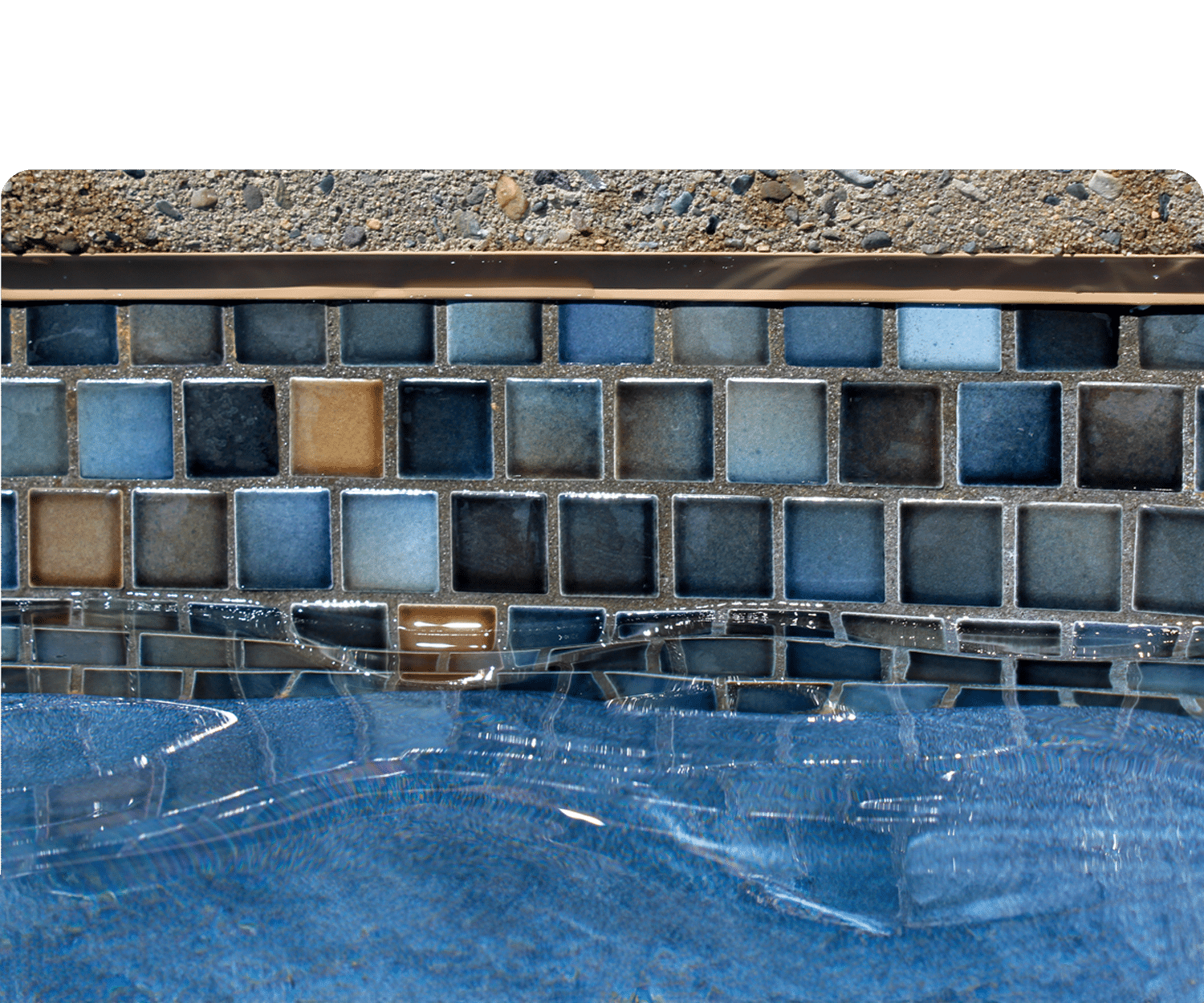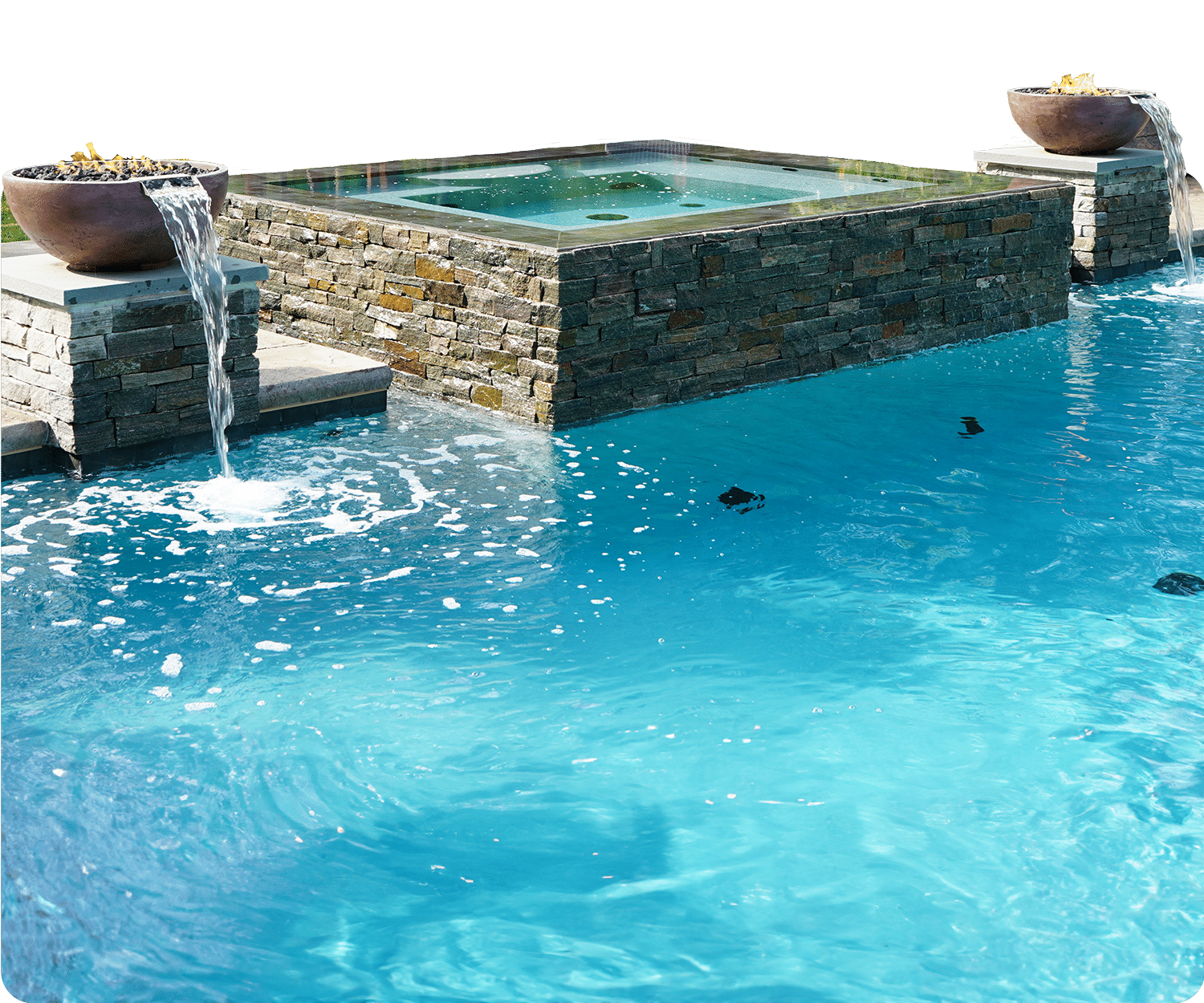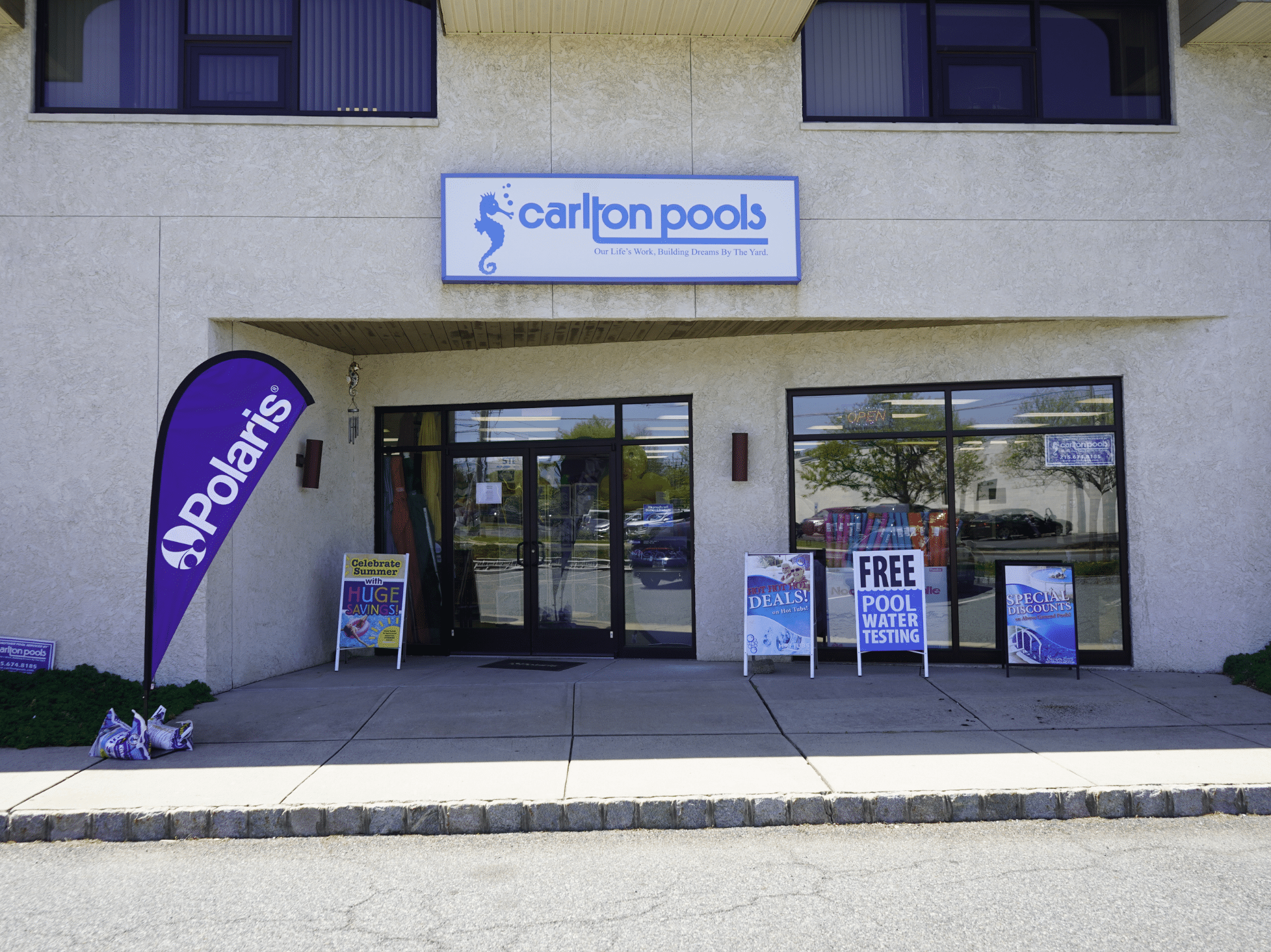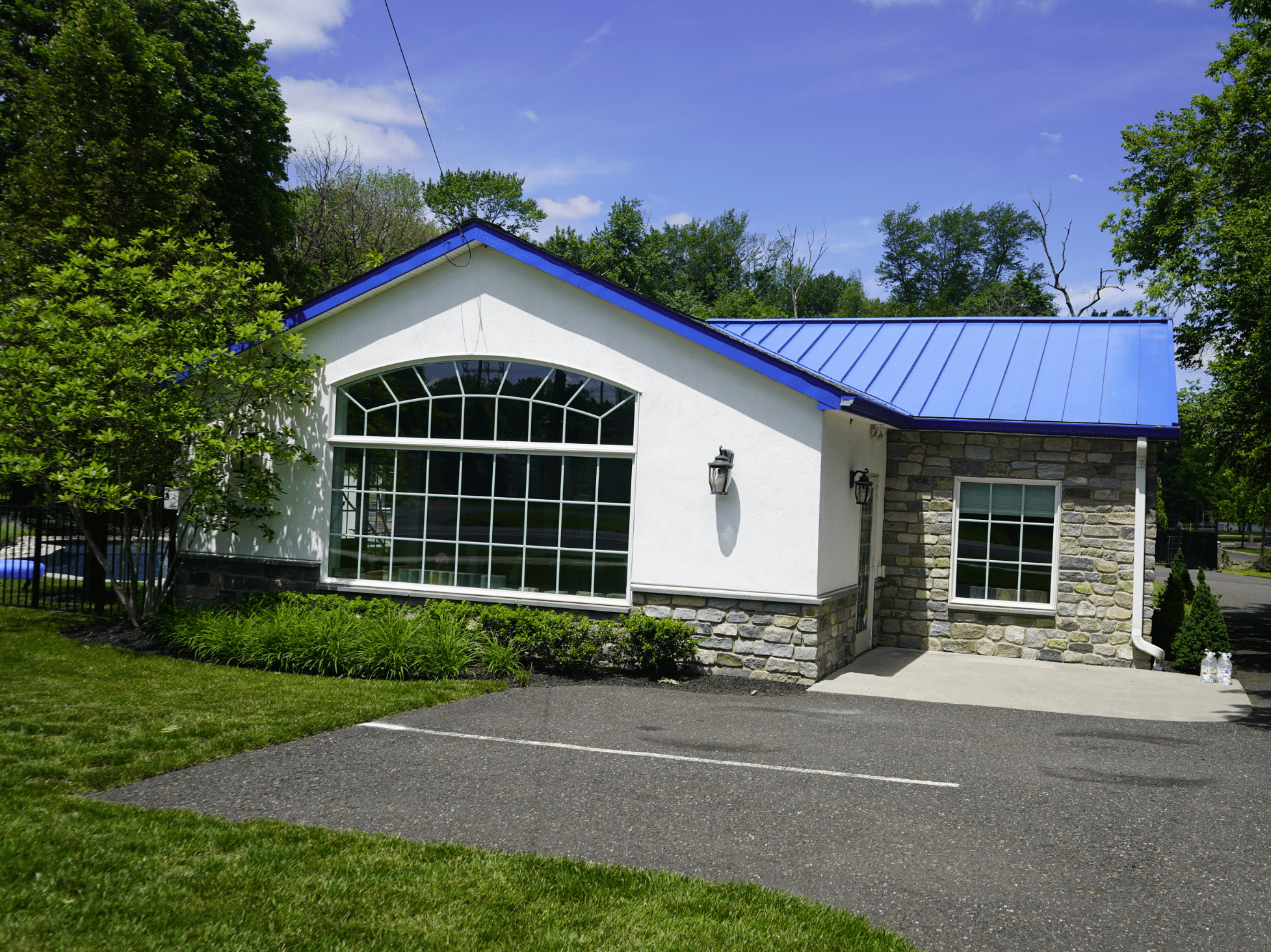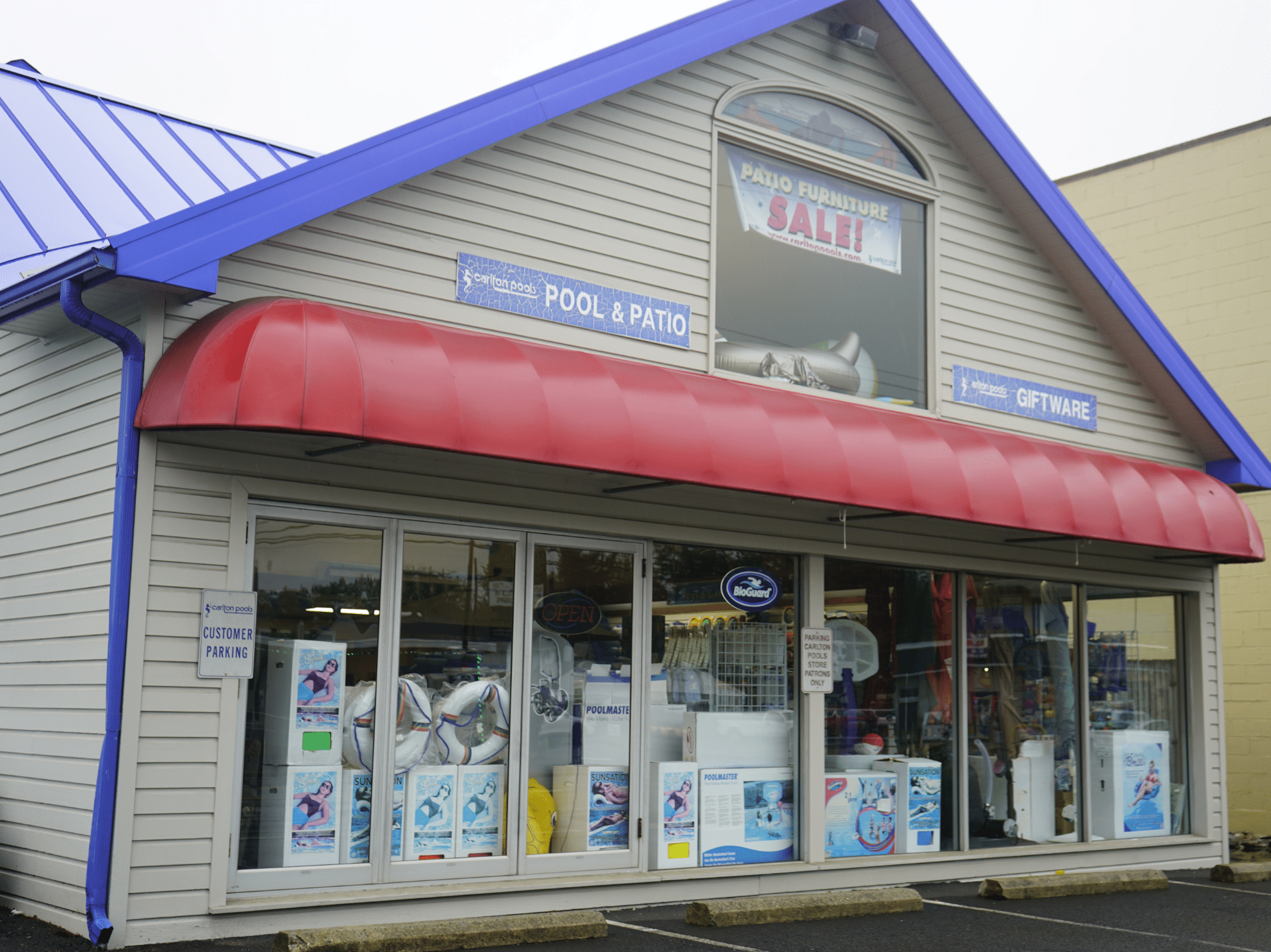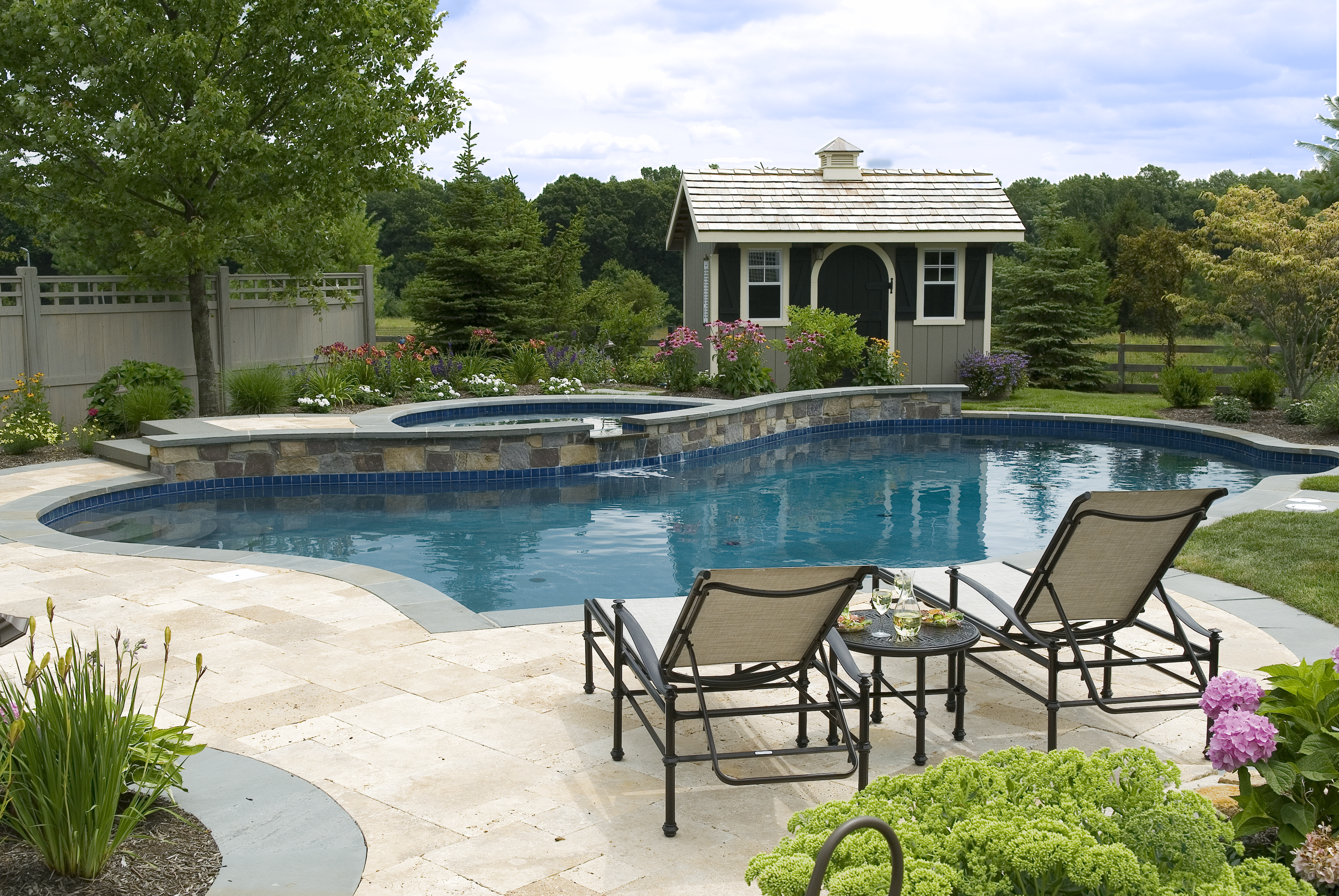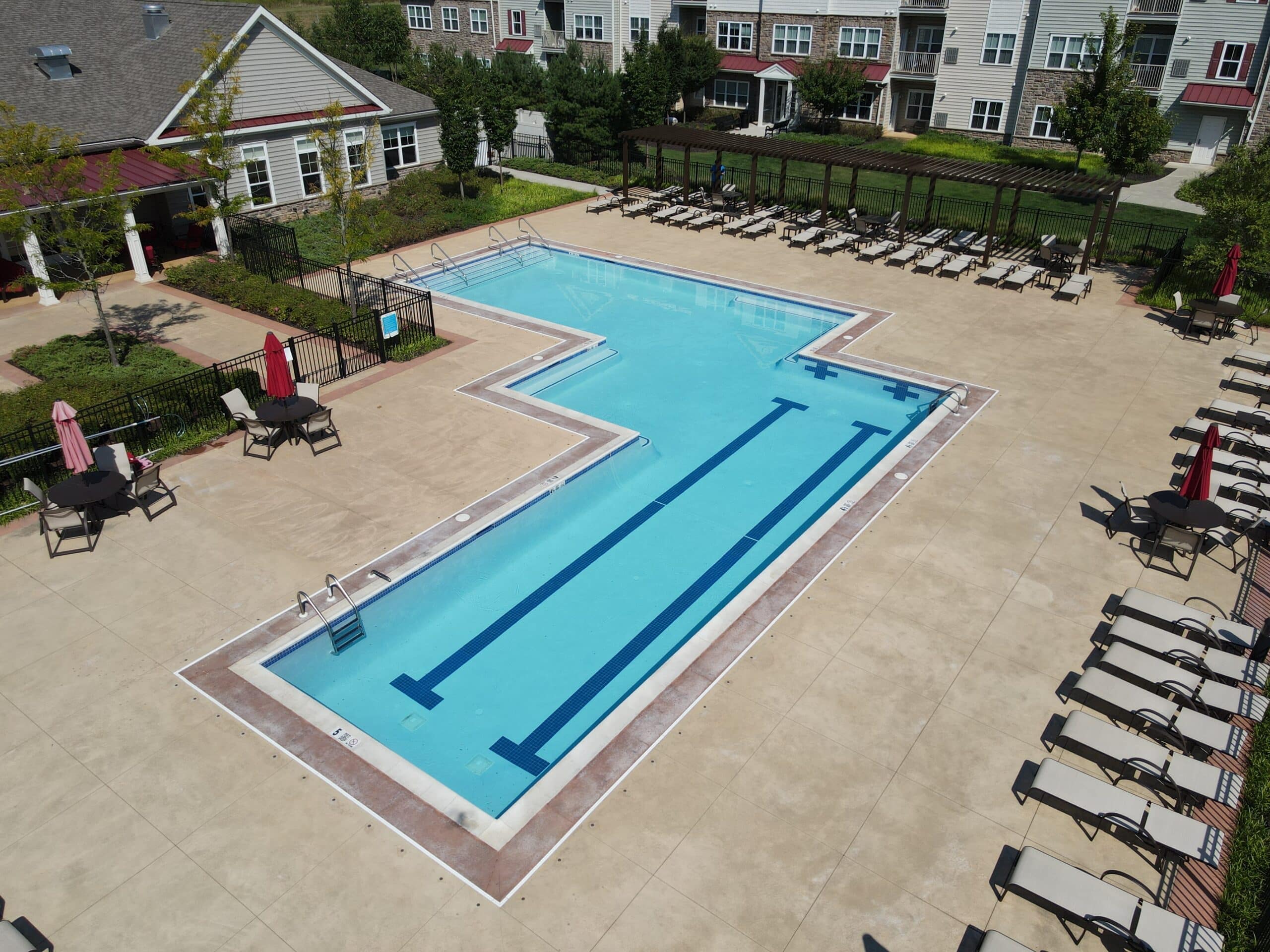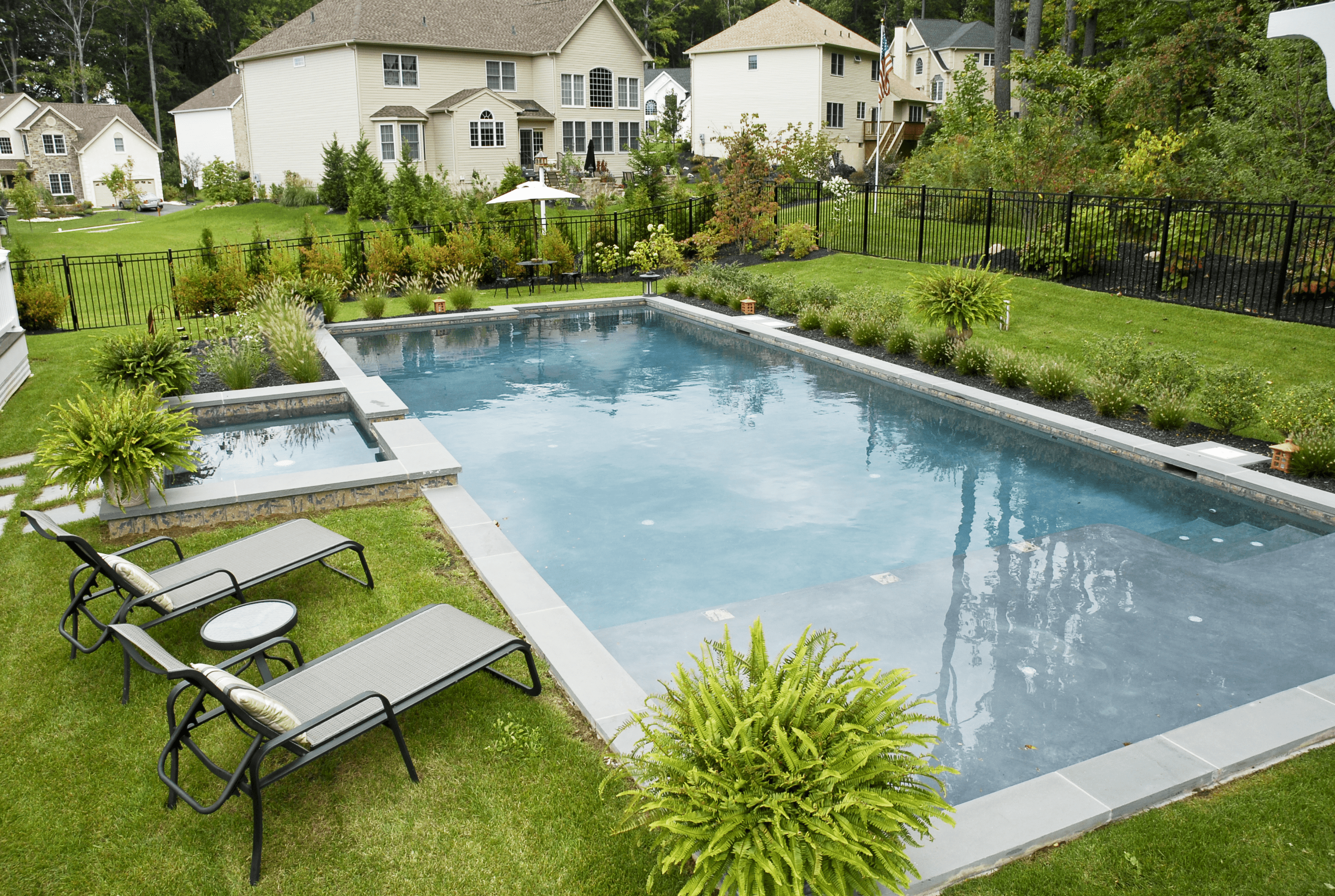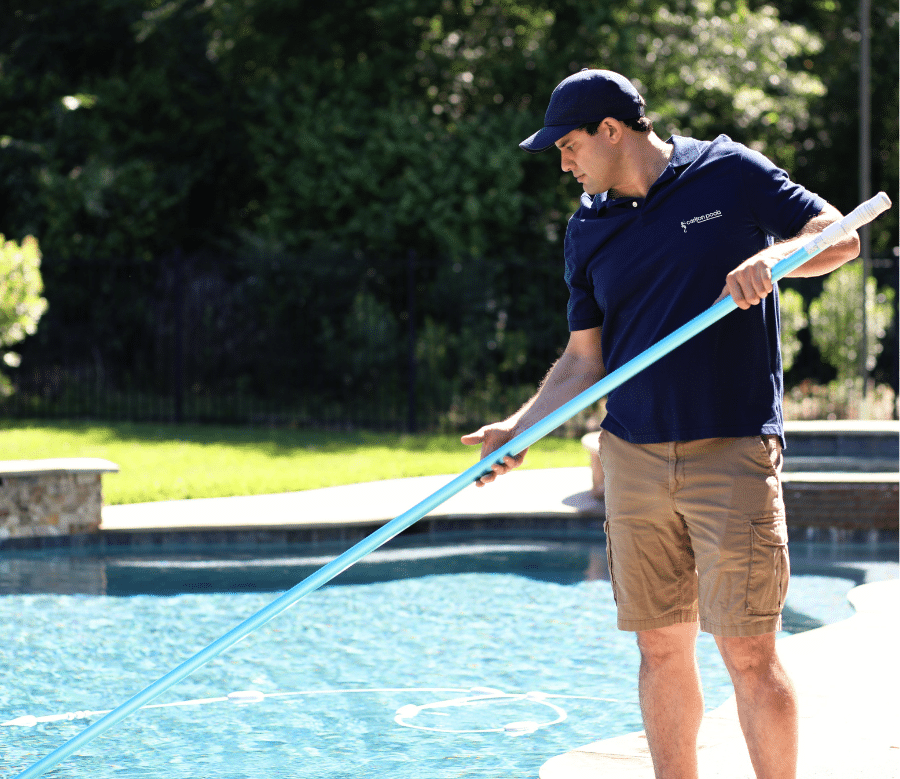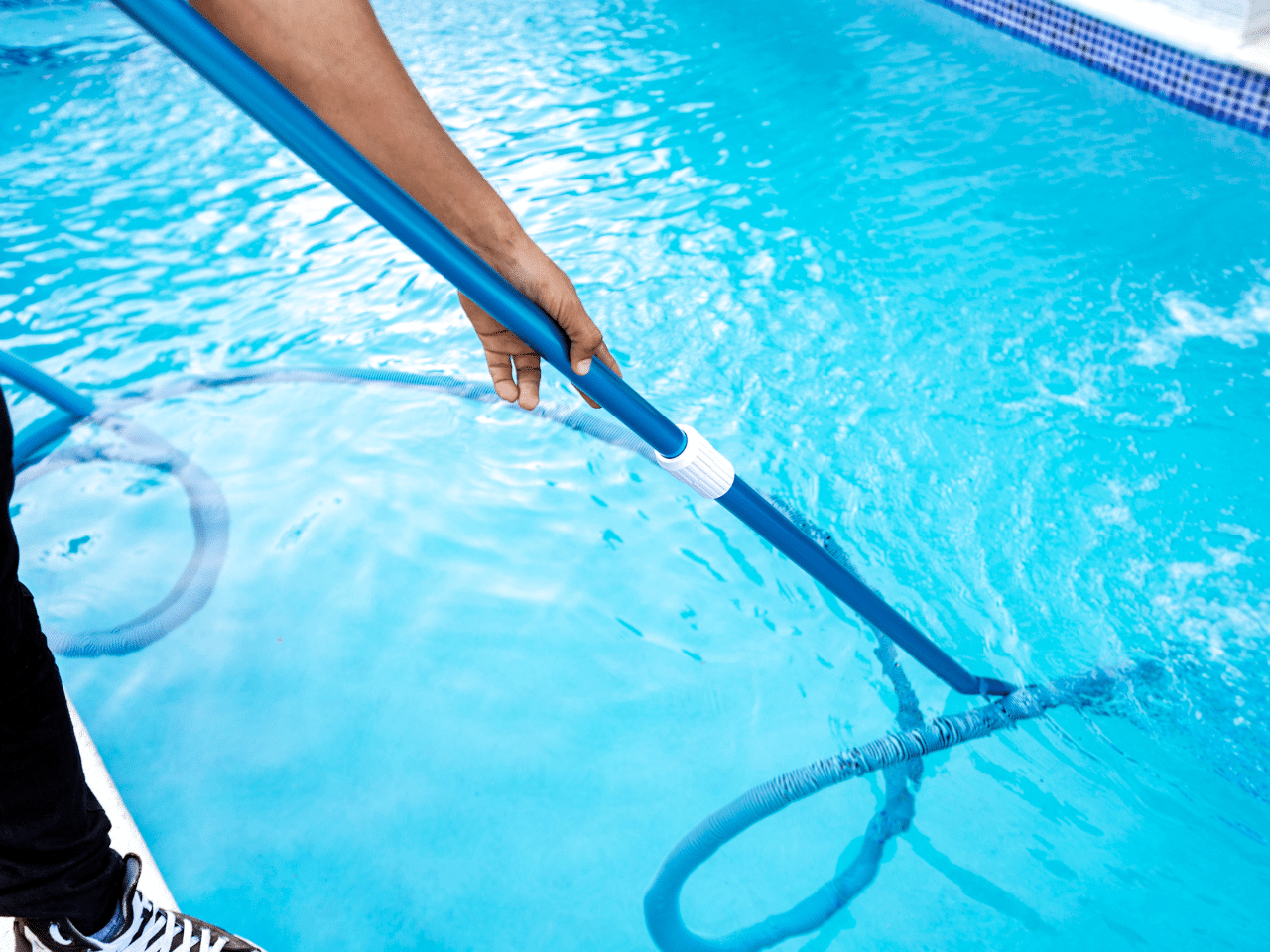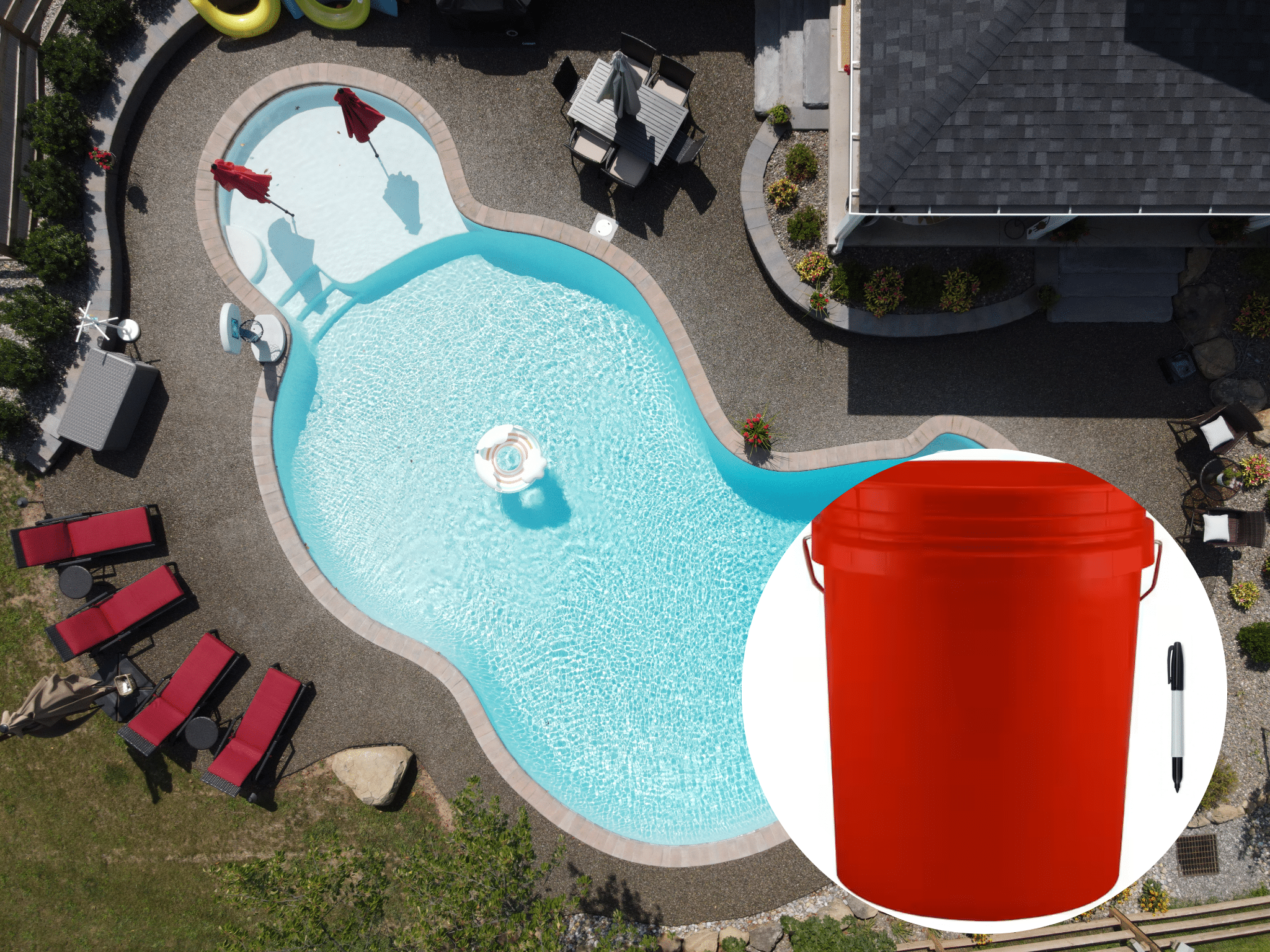
Is your swimming pool losing water when the filter runs? Pools can lose up to 6 inches of water overnight due to significant leaks. This blog will guide you through identifying and fixing pool leaks, helping ensure your pool maintains its proper water level.
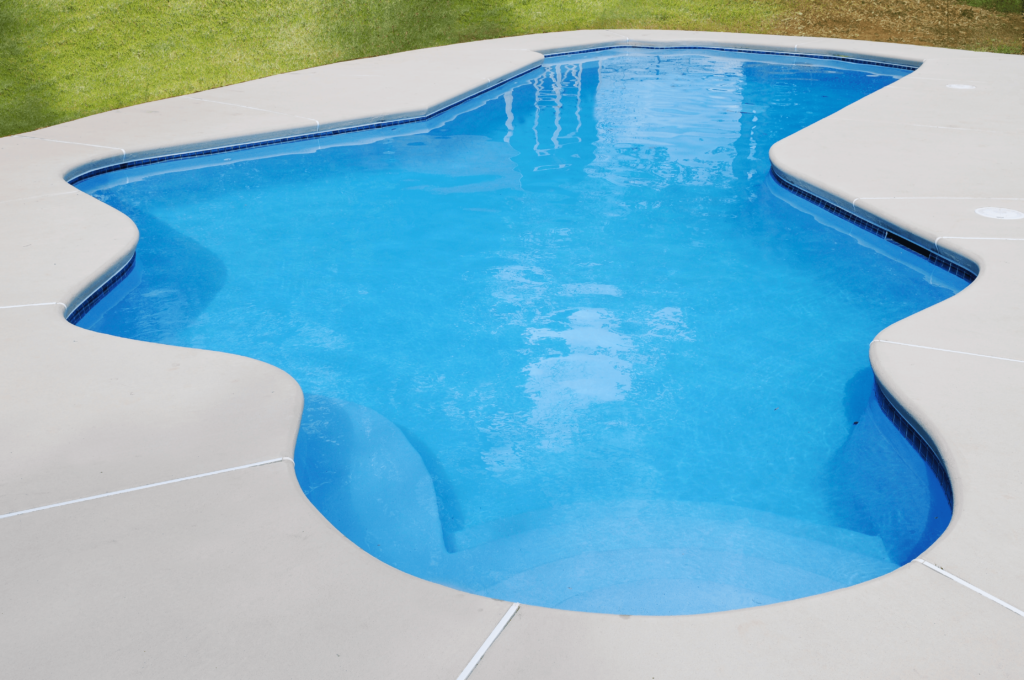
Understanding Water Loss in Pools
Pool water loss is a common issue when the filter runs. Understanding the reasons and amount of water loss per day can help in addressing this concern effectively.
Causes of Pool Water Loss
Water evaporation and leaks in the filtration system are common reasons why pools lose water. On sunny days, pools can lose a significant amount of water to evaporation, contributing to daily loss.
Additionally, faults within the pool pump system or pressure side plumbing may result in leaks that only occur when the filter runs. These issues highlight the importance of regular pool maintenance and leak detection efforts to keep water levels stable.
Leaks at critical points like the pot o-ring or where pipes meet the suction side can go unnoticed but cause substantial water loss over time. Monitoring your pool’s water level is crucial for early detection of these problems.
Using a pool water evaporation chart helps determine if diminishing levels are due to natural causes or signal underlying issues requiring immediate attention through repair or adjustment of the equipment involved.
Amount of Water Loss per Day
A pool can lose up to 1/4 inch of water per day due to evaporation. In some cases, evaporative losses can be as high as 1/2 inch daily depending on factors such as wind, temperature, and humidity levels.
If your pool is losing more than 1/4 inch of water a day, it may indicate an issue that requires attention. By keeping an eye on your pool’s water level and taking measures to minimize evaporation, you can maintain the proper water balance and prevent excessive water loss.
Possible Sources of Pool Water Leakage
Pool water leakage can stem from both internal and external sources, leading to a significant loss of water. Internal leaks may arise within the pool structure or equipment such as the backwash valve, gasket, or rotor. External leaks can occur in the pressure side plumbing or around the inground pool area due to excessive moisture.
Internal Leaks
Internal leaks are a common source of water loss in pools. These leaks can occur at the pool pump, filter, or within the plumbing system. They often result from issues such as deteriorated gaskets, O-rings, or a damaged rotor.
Detecting internal leaks may require inspecting the equipment pad and conducting a bucket test to determine if excessive moisture exists when the filtration system is running.
Repairing internal leaks involves identifying and addressing any damaged components such as gaskets or rotors. Additionally, regular maintenance of the pool pump and filter is essential for preventing internal leaks that lead to water loss.
External Leaks
External leaks in pools can lead to significant water loss. These leaks often occur in the pool structure, including cracks in the pool shell or tears in the vinyl liner. Additionally, external leaks can result from damage to the plumbing system outside of the pool, such as pipe fractures or faulty gaskets.
Detecting and fixing these external leaks is crucial to prevent continued water loss and potential structural damage.
Analyzing and addressing all possible sources of external leaks is essential for maintaining a consistent water level in your pool. By identifying and repairing any issues related to external leaks promptly, you can ensure proper water conservation and prevent further damage to your pool’s structure.
How to Detect and Diagnose Pool Water Leaks
Detecting and diagnosing pool water leaks involves conducting a bucket test, checking for wet areas around the pool, inspecting the equipment pad, and examining the tile line and pool structure.
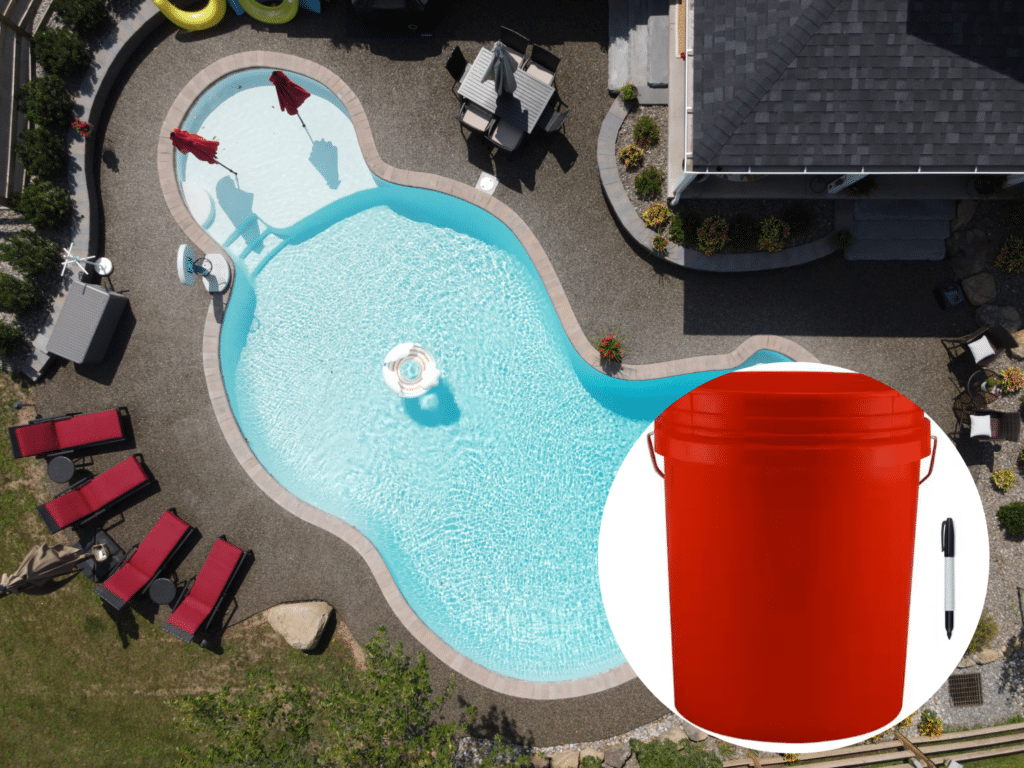
Conducting a Bucket Test
To conduct a bucket test, place a bucket on the pool step and fill it with water to match the pool’s water level. Mark both levels inside the bucket and outside, then leave it for 24 hours.
If there’s more significant reduction outside the bucket compared to inside, it may indicate a leak. This simple test can help determine if your pool is losing water due to evaporation or a potential leak in the system.
By conducting this straightforward test at home, you can efficiently use key resources like gasket or rotor and pool leak detection. It aids in saving time by narrowing down possible issues related to Pool pump leaks and ensures effective Water level maintenance by distinguishing between regular evaporation and an actual problem needing repair.
Checking for Wet Areas Around the Pool
To identify potential leaks, carefully inspect the area around your pool for wet spots or soggy patches. Pay close attention to the ground near the pool’s equipment pad and along the perimeter of the pool.
Look out for areas where there is an unusual accumulation of water, as this could be a key indicator of a leak in either the pool structure or its plumbing system. Regularly checking for wet areas can help you catch any leaks early on and prevent further water loss.
Inspecting the Equipment Pad
When it comes to inspecting the equipment pad, it’s crucial to check for any signs of water leakage or damage. Start by examining the pump and filter for wet areas, which could indicate a leak in the plumbing.
Additionally, look for rust, corrosion, or unusual sounds coming from the equipment that may signal a problem with the pool filter maintenance or pool backwash system.
Checking the Tile Line and Pool Structure
Inspect the tile line and pool structure for any signs of cracks or damage. Look for gaps or separation between the tiles, as well as areas where the grout is missing. This inspection will help identify any potential areas where water could be leaking from the pool.
Pay close attention to the condition of the pool’s structure, including concrete or fiberglass surfaces, and inspect for any visible signs of deterioration or weakening that could indicate a leak point.
While checking the tile line and pool structure, ensure you also examine the area around fittings such as skimmers, drains, and returns for any indications of leaks. Any noticeable moisture or discoloration in these areas could point towards a leak in your pool’s plumbing system or surrounding structures.
Solutions for Fixing Pool Water Leaks
Repairing pool water leaks involves identifying and addressing internal and external leaks, as well as adopting measures to minimize future water loss. To learn more about maintaining your pool’s water level and plumbing system.
Repairing Internal Leaks
For repairing internal leaks in your pool, it’s essential to inspect the pool’s structure and plumbing system meticulously. Identify any cracks or damage in the pool walls, floor, and fittings.
Additionally, check for water loss around the equipment pad to pinpoint potential leak sources within the pressure side plumbing. By addressing these issues promptly, you can prevent further water loss and maintain optimal water levels in your pool.
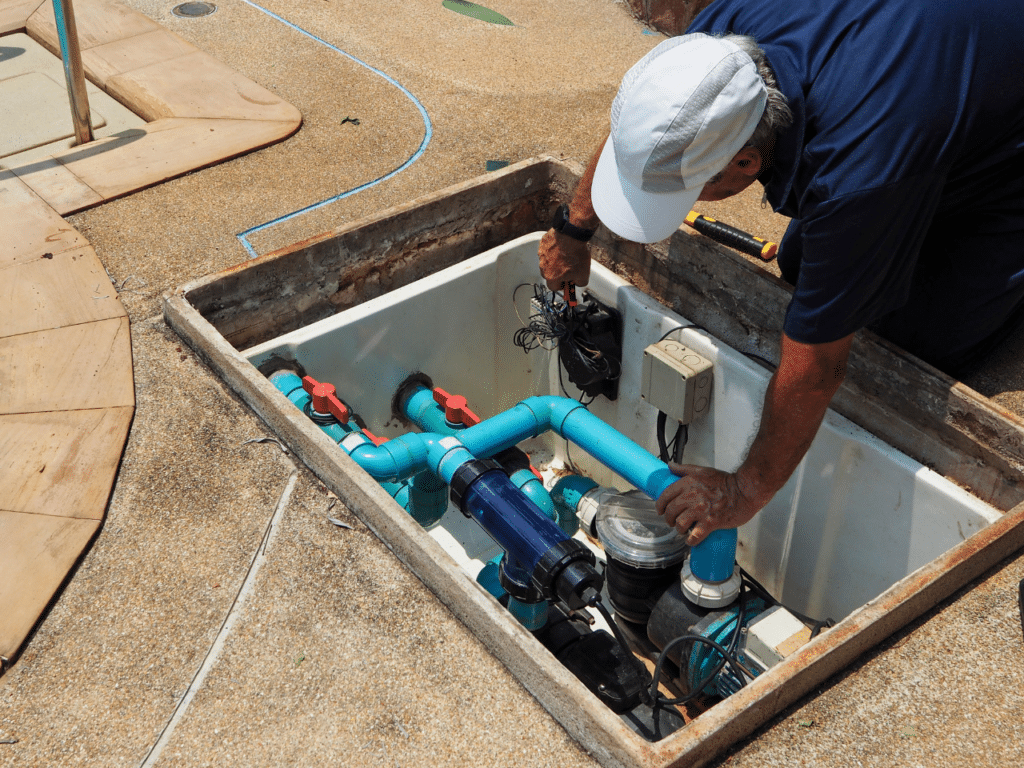
Fixing External Leaks
To fix external leaks in your pool, start by carefully inspecting the pool’s exterior for any visible cracks or damage. Pay close attention to the areas around fittings, skimmers, and light fixtures as these are common locations for leaks.
Once you’ve identified a potential leak, thoroughly clean the area and apply an appropriate waterproof sealant to prevent water from escaping. Additionally, if there are loose tiles or deteriorating grout along the waterline, addressing these issues promptly can help prevent further leakage.
Preventing and Minimizing Water Loss
To prevent and minimize water loss in your pool, maintaining the proper water level is crucial. Regularly check the pool water level to ensure it falls within the recommended range.
Excessive water levels can lead to cloudy water, while low levels can cause fluctuations in the chemical balance of the pool. Additionally, consider using a pool cover when the pool is not in use to reduce evaporation.
Regular inspections and maintenance of pool equipment such as filters, pumps, and plumbing are essential for preventing leaks. Ensure that all components are correctly installed and free from damage or wear to avoid potential leakage issues.
Conclusion
If your pool loses water when the filter runs, it’s likely due to a pressure-side return leak. Regularly monitor your pool’s water level and conduct tests to detect leaks. Don’t ignore unexplained water loss as it could indicate a significant issue with the pool.
Look for wet areas around the pool and inspect equipment pads to identify potential leakage sources. Make sure to address any leaks promptly to prevent further water loss.
Here at Carlton Pools, our team of experienced professionals in PA and NJ can assist you with inspecting your inground concrete pool and fixing any leaks you may have. We offer comprehensive leak detection services that utilize cutting-edge technology to pinpoint the exact location of the leak.
Don’t hesitate to contact our service team today to schedule a leak inspection for your inground concrete pool. We’re here to help you keep your pool in top condition and ensure a refreshing summer season for you and your loved ones.
FAQs
1. Why does my pool lose water when the filter is running?
When your pool loses water while the filter runs, it might be due to leaks in the pressure side plumbing of your pool’s filtration system.
2. What should I check if my pool’s water level drops during filtration?
Check for signs of leaks or damage in the pool’s pressure side plumbing, as this part carries water from the pump back into the pool and can cause water loss if faulty.
3. How can I fix a leak in my pool’s filtration system?
To fix a leak, you may need to inspect all parts of your pool’s pressure side plumbing for any cracks or holes and consider professional pool repair services for complex issues.
4. Can running the filter too much cause my pool to lose water?
Running the filter itself doesn’t directly cause your pool to lose water; however, existing issues with pressure side plumbing become more noticeable when the system is active, leading to visible water loss.

